Humanoid Robots Guide (2025): Types, History, Best Models, Anatomy and Applications

The humanoid robotics sector is experiencing unprecedented growth, with 2024 marking the emergence of advanced prototypes, 2025 witnessing the beginning of mass production, and 2026 projected to usher in widespread commercial adoption.
Throughout 2024, industry leaders and innovative startups have made significant strides in humanoid robot development. Notable milestones include Boston Dynamics' release of an electric Atlas model (April 17), Unitree's introduction of the G1 humanoid robot priced from $16,000 (May 13), 1XTech's unveiling of the bipedal NEO (August 31), and Kepler's launch of the K2 (October 18). This surge of technological innovation from major manufacturers has injected vital momentum into the humanoid robotics industry.
As we move through 2025, the focus has shifted to mass production and comprehensive functionality testing. Tesla CEO Elon Musk has announced plans to produce 10,000 Optimus robots this year, with potential scaling to 10,000 units monthly by 2026 if development proceeds as anticipated.
This comprehensive guide explores multiple dimensions of the humanoid robotics landscape, including:
- The definition of a humanoid robot
- Classification of humanoid robots
- Overview of the humanoid robot market
- Development stages of the humanoid robot market
- The short history of the humanoid robot market
- The Best Western Humanoid Robots
- The Best Chinese Humanoid Robots
- Detailed examination of the industry supply chain
- Future outlook and key trends
As perhaps the most exciting technological frontier of 2025, humanoid robotics represents a transformative field with far-reaching implications across multiple sectors.
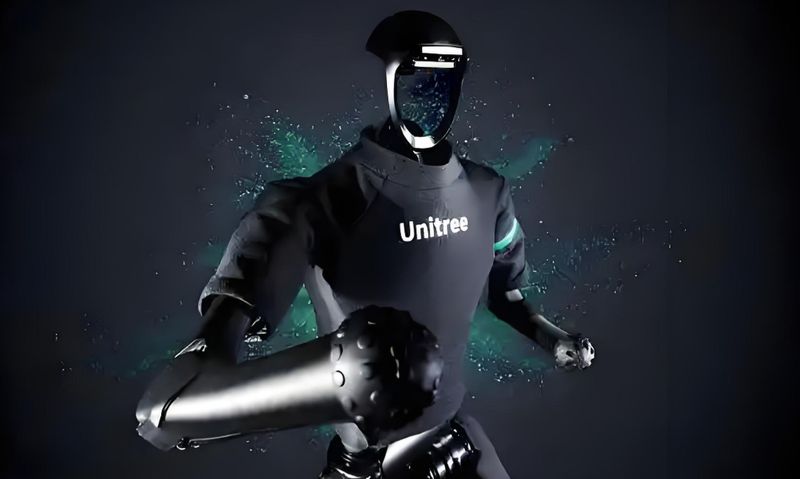
What is a Humanoid Robot?
A humanoid robot is a robot designed to resemble the human body in shape and function, typically featuring a torso, head, two arms, and two legs. Some robots include wheeled bases instead of legs, and maintain human-like upper bodies. These robots are engineered not only to mimic human physical appearance but also to replicate human movements, actions, and capabilities.
The primary purpose of humanoid design is functional: enabling robots to operate efficiently in environments built for humans without requiring significant modifications to existing infrastructure. This human-like form allows them to interact with tools, navigate spaces, and perform tasks originally designed for human execution, such as climbing stairs, opening doors, or manipulating objects.
Humanoid robots are equipped with sophisticated components including:
- Actuators that control movement and replicate human dexterity
- Sensors (visual, auditory, tactile) that mimic human senses
- On-robot computing systems and AI that enable perception, planning, and autonomous operation
These robots are increasingly capable of performing complex tasks through artificial intelligence and machine learning, allowing them to adapt to unpredictable real-world scenarios after training in simulated environments. For example, Boston Dynamics' Atlas robots first master dynamic movements like parkour and backflips in physics-based simulation environments where they can safely fail thousands of times, then transfer this learning to physical robots that demonstrate remarkable adaptation when encountering real-world variations like uneven surfaces or unexpected obstacles.
Classification of Humanoid Robots
Core Capabilities
Humanoid robots are distinguished from other robotic systems by their comprehensive integration of four essential capabilities:
- Intelligent Perception: Environmental awareness through multi-modal sensing
- Motion Control: Coordinated movement of complex joint systems
- Intelligent Decision-Making: Task planning and autonomous operation
- Human-Robot Interaction: Natural communication and collaboration with humans
Classification by Form
1. Bipedal Humanoid Robots
These feature human-like legs and feet for walking and balancing, providing maximum mobility in human environments but requiring sophisticated balance systems.
- Examples: Boston Dynamics Atlas, Tesla Optimus, Unitree H1, Figure 01, Fourier Intelligence GR-1, Kepler K2
2. Wheeled Humanoid Robots
Combining human-like upper bodies with wheeled bases, these offer increased stability and energy efficiency at the cost of stair navigation capabilities.
- Examples: Agibot A2-W, Amazon Digit, SoftBank Pepper, Toyota HSR
| Robot Type | Wheeled Humanoid Robots | Legged Humanoid Robots |
| Key Features | Wheel-driven propulsion combined with robotic arms and dexterous hand solutions. Emphasizes tactile sensors and dexterous manipulation capabilities while maintaining mobility. | Emphasizes the robot's leg mobility capabilities, with hands primarily used only for balance. |
| Representative Products | Agibot A2-W, Paxini, 1Xtech EVE, Jianzhouni TORO-ONE | Tianlink Robot T1, Leju Robotics, Unitree H1, Figure A1 |
Classification by Application Domain
Humanoid robot applications can be ranked by increasing demands on motion control capabilities:
1. Industrial Manufacturing (Lowest Motion Control Requirements)
- Characteristics: Structured environments, repetitive tasks, controlled parameters
- Applications: Assembly line work, quality control, hazardous material handling
- Advantages: Ideal for initial deployment due to data collection opportunities and controlled conditions
2. Commercial Service Environments
- Characteristics: Semi-structured settings with human interaction
- Applications: Retail assistance, hospitality, museum guides, educational support, healthcare assistance
- Challenges: Requires reliable human interaction and navigation in changing environments
3. Extreme Operational Environments
- Characteristics: Hazardous or inaccessible locations with specialized requirements
- Applications: Disaster response, chemical plants, deep-sea operations, space exploration, military operations
- Challenges: Environmental adaptation, specialized motion capabilities, high-precision operations
4. Home Services (Highest Motion Control Requirements)
- Characteristics: Unpredictable, non-standardized environments with frequent interaction
- Applications: Eldercare, household chores, personal assistance
- Challenges: Requires advanced adaptability, fine manipulation, and natural interaction capabilities
Classification by AI Integration Strategy
1. Vertically Integrated Developers
Companies that develop both robot hardware and AI models in-house.
- Examples: Tesla, Figure, Unitree Robotics, RobotEra, Paxini Perception Technology
2. Hardware-Focused Manufacturers
Companies prioritizing robot hardware while partnering for AI capabilities.
- Examples: Sanctuary AI, 1X, Agility Robotics, Apptronik, Boston Dynamics, Ubiquitous, Fourier
3. AI Model Providers
Technology companies with strong AI foundations supplying models to robotics manufacturers.
- Examples: OpenAI, Microsoft, NVIDIA, Google, PI, ByteDance, Baidu, Huawei
This classification framework helps stakeholders understand the current landscape and evolutionary trajectory of humanoid robotics as the technology continues to mature.
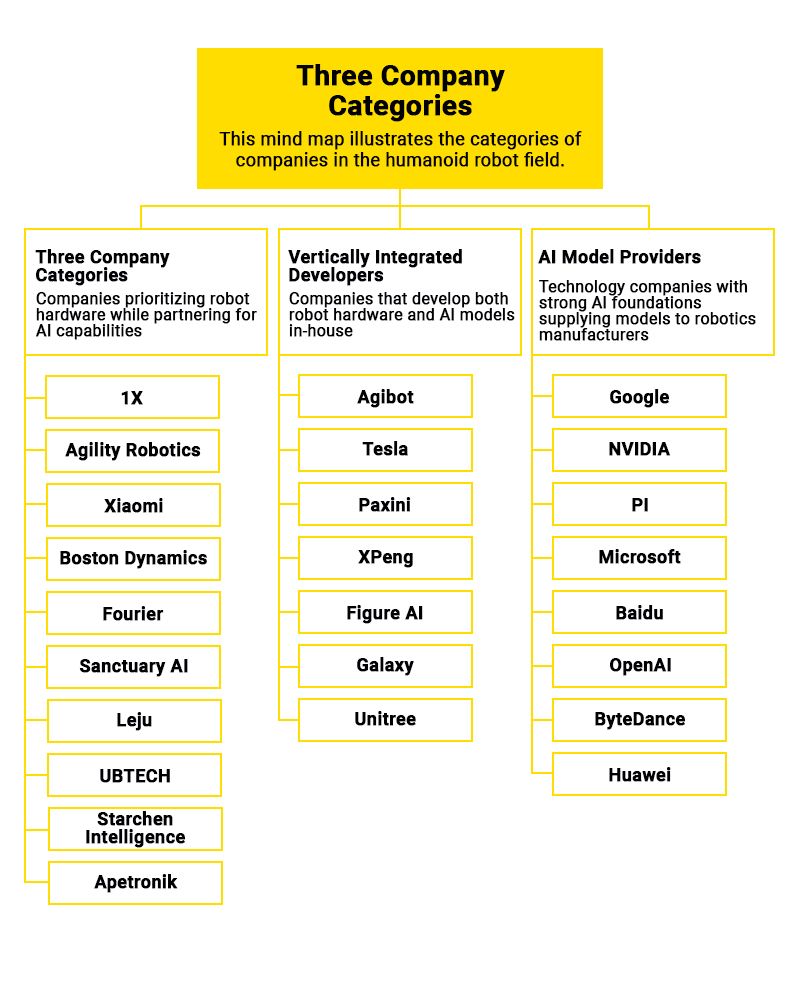
Humanoid Robot Global Market Size and Growth
The global humanoid robot market is experiencing exponential growth, with valuations reaching $2.37 billion in 2023 and projected to expand at a 40.69% CAGR through 2034. By 2033, the market is expected to reach $69.65–113.89 billion, driven by advancements in AI, labor shortages, and diverse industrial applications, according to Fortune Business Insights, 2025, and Market.us, 2025.
- The US humanoid robot market is projected to grow from $0.58 billion in 2024 to $3.83 billion by 2029 at a 45.7% CAGR, led by companies like Agility Robotics, Boston Dynamics, and Tesla. Biped robots dominate due to their adaptability in logistics, healthcare, and education, according to MarketsandMarkets, 2025.
- Europe’s humanoid robot market is projected to grow from $0.49 billion in 2024 to $2.47 billion by 2030 at a 52.5% CAGR, led by companies like 1X Technologies, NEURA Robotics, and PAL Robotics, with biped robots gaining traction due to their adaptability in healthcare, eldercare, and manufacturing; this growth is fueled by demographic shifts, especially aging populations and labor shortages, and is further supported by EU-funded initiatives to deploy robots in nursing homes and hospitals, according to KBV Research, 2023, Grand View Research, 2023, Silicon Canals, 2024, The Robot Report, 2025.
- The China humanoid market is poised to dominate, with its market projected to reach $1.12 billion by 2025 (50% of global share) and $41.3 billion by 2035. Government initiatives, such as the MIIT’s 2023 guidelines, and companies like UBTECH and Unitree Robotics fuel this growth, according to Grand View Research, 2023, and Market.us, 2025.
Market Segmentation
1. By Component:
- Hardware dominated with 64% share ($1.52 billion in 2023), while software is growing faster at 54.51% CAGR, according to Grand View Research, 2023.
2. By Application:
- Research & Development and Education markets are driving the growth of humanoid robotics, followed by customer service deployment for branding purposes, and Industrial Automation, and Logistics & Warehousing testing, according to Top3DShop’s private interviews with Unitree Robotics, Agibot, UBTech, Fourier, Paxini, Booster Robotics, Leju Robotics in March of 2025.
3. By Motion Type:
- The wheel humanoid robot market was the largest segment of the humanoid robot market segmented by motion type, accounting for 70.2% of the market in 2023. Going forward, the bipedal humanoid robot market is expected to be the fastest growing segment at a CAGR of 54.47% during 2023-2028, according to MarketsandMarkets, 2025.
Industry Development Stages (L0-L5)
Similar to autonomous vehicles, humanoid robots follow a development progression through six distinct levels of autonomy and intelligence. The industry is currently in transition between L3 and L4 capabilities, with significant advancements expected in the coming years.
Level 0: No Autonomy
Definition: Basic mechanical systems with no independent function
- Requires continuous human control for all movements
- Operates as a pure mechanical extension of human commands
- No onboard intelligence or decision-making capability
- Examples: Early industrial manipulators, remote-controlled robot frames
Level 1: Auxiliary Control
Definition: Basic programmable movement with limited independent function
- Capable of recording and replaying specific movement sequences
- Features joint control for basic positioning and manipulation
- Requires pre-programmed instructions for every action
- Examples: Basic industrial robots, early entertainment robots
Level 2: Partial Autonomy
Definition: Algorithm-driven movement planning with specified parameters
- Generates motion trajectories based on programmed algorithms
- Plans paths to accomplish predefined tasks
- Limited to operating within carefully structured environments
- Examples: First-generation manufacturing robots, basic bipedal platforms
Level 3: Conditional Autonomy
Definition: Sensor-equipped systems with environmental awareness
- Integrates multiple sensors to perceive surroundings
- Recognizes objects and navigates environments with minimal intervention
- Responds appropriately to predetermined scenarios
- Makes basic decisions within limited parameters
- Examples: Tesla Optimus prototype, Boston Dynamics Atlas (early versions)
Level 4: High Autonomy
Definition: Cognitive systems capable of independent reasoning and task completion
- Performs complex observation and measurement of environments
- Reasons autonomously to solve problems and complete tasks
- Requires minimal human intervention for extended operations
- Adapts to changing conditions and unexpected obstacles
- Examples: In development (Figure AI, 1X NEO, advanced Optimus versions)
Level 5: Full Intelligence
Definition: Human-equivalent general intelligence with creative problem-solving
- Demonstrates human-like reasoning and decision-making capabilities
- Exhibits creativity and novel solution generation
- Performs complex tasks without prior specific programming
- Learns continuously and improves performance independently
- Status: Theoretical goal, likely decades from realization
Current Industry Position: The humanoid robotics sector is primarily operating between L2 and L3, with leading companies pushing into early L4 capabilities. This transition is characterized by increasing integration of large language models, improved sensory processing, and more sophisticated motion planning algorithms. The advancement from L3 to L4 represents a critical inflection point where robots begin shifting from executing predefined tasks to understanding and adapting to complex, changing environments.
The Brief History of Humanoid Robotics
The evolution of humanoid robotics has accelerated dramatically in the past fifteen years, building upon decades of earlier mechanical developments. While conceptual humanoid machines date back to the late 19th century with creations like Ali the Electrical Automaton in 1886, the modern era began with Honda's ASIMO in the early 2000s, culminating in its advanced 2011 version that featured the world's first autonomous behavior control technology. This version of ASIMO represented a significant leap forward in motion control, enabling balanced walking without operator control. The development of humanoid robots has been driven by a vision to create machines that can assist humans in various settings, from manufacturing to healthcare, addressing labor shortages and enhancing quality of life.
The period from 2012 to 2017 saw significant advancements in motion control and human interaction capabilities. In 2012, French company Aldebaran introduced Romeo, a humanoid robot designed specifically to assist elderly people with household tasks, capable of high-quality bipedal walking and complex behaviors like opening doors. By 2014, Softbank's Pepper emerged as a milestone in human-robot interaction, featuring the ability to recognize human emotions through facial expressions and voice tones. This was followed by Toyota's T-HR3 in 2017, which showcased remarkable mimicry capabilities through its Master Maneuvering System – a remote control setup that enabled the robot to mirror the movements of its human controller with precision. These developments represented steady progress toward creating robots that could not only navigate human environments but also interact meaningfully with people.
From 2018 to 2022, humanoid robots made extraordinary advances in mobility, perception, and AI integration. Boston Dynamics' Atlas demonstrated impressive agility in 2018 with its "dual-leg" standing body sensors and perception capabilities through RGB cameras and depth sensors, allowing it to navigate complex environments. In 2020, Agility Robotics introduced Digit, a commercially available bipedal robot priced at $250,000 that could jump, climb stairs, and work alongside autonomous vehicles for deliveries. Digit was specifically designed to operate in human environments without requiring modifications to existing infrastructure, making it ideal for warehouses and logistics operations. Tesla joined the humanoid robot race in 2022 with Optimus, leveraging the company's neural network technology developed for autonomous driving to create a general-purpose robotic assistant intended for tasks considered dangerous, repetitive, or boring for humans.
The most recent period (2023-2025) has witnessed rapid innovation and commercial deployment of humanoid robots. In 2023, Sweden's 1X unveiled NEO, featuring advanced AI capabilities that enable free movement and remote operation, with plans to test its Neo Gamma version in hundreds of homes by the end of 2025. In April 2024, Boston Dynamics released an all-electric version of Atlas with broader range of motion and higher dexterity than its hydraulic predecessor. Later that year, China's UBTECH introduced the Walker S1 humanoid robot, which demonstrated groundbreaking integration with unmanned logistics vehicles, driverless cars, and intelligent manufacturing systems. By 2025, humanoid robots have begun real-world deployment at scale, with Agility's Digit robots handling tasks in factories for customers like GXO Logistics, and UBTech's Walker S1 receiving over 500 orders from major manufacturers including BYD, the world's largest electric vehicle maker. This commercialization phase marks a pivotal transition from laboratory research to practical applications, addressing labor shortages and transforming industries through automation.
The following is the development of humanoid robot technology, according to the Prospect Industry Research Institute:
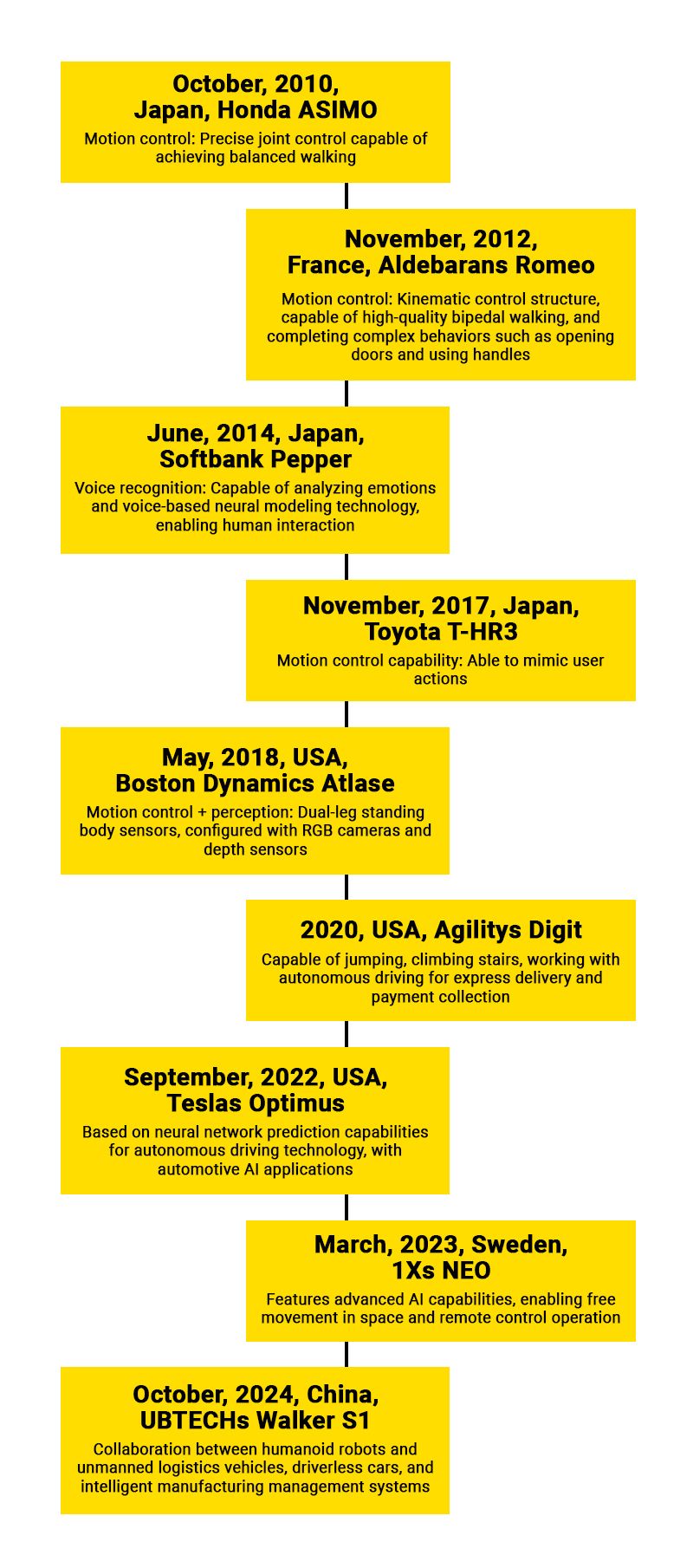
This development will be driven by several factors:
- Accelerated improvement of AI models
- Reducing costs of the core components
- Breakthroughs in key technologies for "brain," "cerebellum," and "limbs" systems
Best Humanoid Robots from the West
Based on comprehensive capabilities including AI model integration, commercialization potential, production readiness, customer adoption, and dexterity, we rank the Western humanoid robotics companies as follows (arbitrary ranking): Tesla > Figure AI > Agility > Apptronik > Sanctuary AI > Boston Dynamics > 1X > Neura Robotics > Mentee Robotics.
Comparison analysis of the western humanoid robot manufacturers
| Company | Tesla | Figure AI | Agility | Apptronik | Sanctuary AI | Boston Dynamics | 1X | Neura Robotics |
| Country | USA | USA | USA | USA | Canada | USA | Norway | Germany |
| Stage | Large corporation with a robotics division | Startup | Startup | Startup | Startup | Established | Startup | Startup |
| Commercial Applications | Automotive manufacturing | Automotive factories and logistics |
Logistics |
Automotive factories and logistics | Commercial retail | — | Household | Industrial/Home |
| Production Plans | Thousands in 2025, 10x annual growth in 2026-27 | 2 customers as of January, 2025, in the next 4 years (2025-28) production is forecasted to reach 100,000 - 200,000 units | Hundreds produced in 2024, targeting 10,000 annual units | Hundreds manufactured in 2025 | Mass production targets set in July 2024, but facing challenges (founder resigned) | Transitioning from hydraulic to electric | 1,000 units in 2025, tens of thousands of NEO by 2028 | 1 billion euros in orders |
| Key Customers | Internal use | BMW, Amazon | Amazon, GXO | Mercedes-Benz, GXO | CTC, Magna | — | Home users | Kawasaki Industries, European customers |
| Leg Configuration | Bipedal | Bipedal | Ostrich-style bipedal | Bipedal/Wheeled | Bipedal (with wheeled option) | Bipedal | Upgraded to bipedal | Bipedal |
| Hand Capabilities | 22 degrees of freedom | 16 degrees of freedom | Electric gripper | — | 20 degrees of freedom | Three-finger gripper | 20 degrees of freedom | Modular hands/Claws |
| AI Model Integration | Self-developed | OpenAI partnership/NVIDIA Cosmos | NVIDIA Cosmos | Google partnership/NVIDIA Cosmos | Self-developed/NVIDIA Cosmos | NVIDIA Cosmos | OpenAI partnership/NVIDIA Cosmos | NVIDIA Cosmos |
1. Tesla: The Clear Industry Leader
Tesla has established itself as the dominant force in humanoid robotics through its comprehensive vertical integration of hardware and software. The company's Full Self-Driving (FSD) technology provides the foundation for physical intelligence capabilities that are currently unmatched in the industry.
Key Technological Advantages:
- Advanced AI Model Integration: Tesla's Grok 3 AI model, released in February 2025, introduces sophisticated "chain of thought" reasoning abilities that enable step-by-step problem solving similar to human cognition. In benchmark tests, it has outperformed other leading models including ChatGPT in areas like mathematics and scientific understanding.
- Superior Computing Infrastructure: Tesla's Dojo supercomputer and specialized AI chips form the backbone of its robotics program. This computational platform enables comprehensive simulation training, allowing Optimus to master complex tasks like path planning, object recognition, grasping objects, and performing precision operations.
- Unmatched Vertical Integration: Drawing on years of manufacturing experience from its automotive division, Tesla has built a robust supply chain that produces critical robot components including actuators, motors, gear reducers, lightweight materials, and specialized gripping mechanisms. This integration allows for quality control across the entire production process.
- Rapid Production Scaling: Tesla has set ambitious production targets with plans to manufacture 5,000-12,000 Optimus robots in 2025, potentially increasing to 10,000 units monthly by mid-2026. The company projects that at production volumes of 1 million units annually, the cost could decrease to approximately $20,000 per robot.
Recent Developments:
Tesla's Optimus robot has undergone significant evolution since its initial introduction in August 2021. The latest generation Optimus Gen2 features dramatically improved mobility with a natural, human-like walking gait characterized by straight knees, heel-to-toe movement, and natural arm swing. These improvements were achieved through reinforcement learning techniques rather than hard-coded movements, allowing the robot to develop more natural movements through AI training.
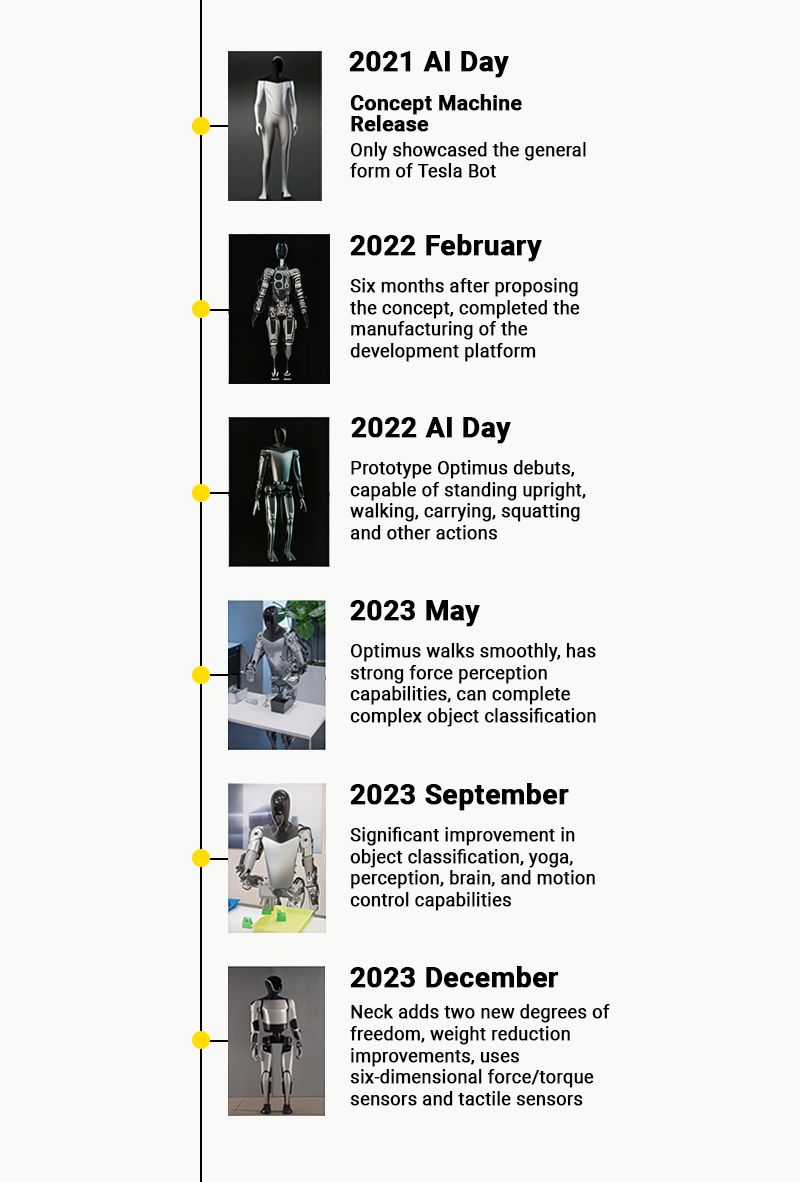
In February 2025, Tesla posted multiple engineering positions at its Fremont factory, signaling an acceleration of its mass production plans for humanoid robots. With its comprehensive technological foundation and manufacturing capabilities, Tesla has positioned itself to potentially transform both industrial and consumer robotics applications.
2. Figure AI: Leading the Humanoid Robotics Revolution
Figure AI, founded in late 2022 and headquartered in Sunnyvale, California, has quickly established itself as a frontrunner in the humanoid robotics industry. The company has secured substantial backing from technology giants including NVIDIA, OpenAI, and Microsoft, propelling its rapid development and commercial deployment.
Robot Evolution and Technical Capabilities
Figure 01 was unveiled in March 2023 as the company's first-generation humanoid robot. The initial model demonstrated basic mobility and object manipulation capabilities but had exposed wiring and electronics designed for easy testing and modifications.
Figure 02, released in August 2024, represents a significant advancement with:
- A sleek, matte black exterior with all cabling integrated within the limbs, eliminating exposed electronics for improved reliability and aesthetics.
- Advanced dexterous hands featuring 16 degrees of freedom capable of lifting objects weighing up to 25 kg (55 pounds).
- 50% greater battery capacity than its predecessor, enabling up to five hours of continuous operation before requiring recharging.
- An advanced vision system powered by six onboard RGB cameras for environmental perception and object recognition.
- Enhanced computational capabilities with 3× more onboard processing power for AI inference compared to Figure 01.
Strategic Investments and Partnerships
In March 2024, Figure AI secured a landmark $675 million Series B funding round that valued the company at $2.6 billion. Key investors included:
- Microsoft and the OpenAI Startup Fund as lead investors
- NVIDIA providing GPU hardware and simulation technology
- Jeff Bezos (through Bezos Expeditions)
- Intel Capital, ARK Invest, and other venture firms
The funding accelerated Figure's timeline for commercial deployment of its humanoid robots. Initially, Figure collaborated closely with OpenAI to develop AI capabilities for its robots. However, on April 2, 2025, Figure announced it was terminating this partnership in favor of its self-developed VLA model called Helix.
Helix: Pioneering Vision-Language-Action Technology
The Helix VLA (Vision-Language-Action) model represents a breakthrough in robotics AI, enabling Figure's robots to:
- Process visual information from their environment
- Understand and respond to natural language commands
- Execute appropriate physical actions based on this combined understanding
This integration allows users to give simple verbal instructions like "Give me the apple on the table," and the robot can identify the apple, navigate to it, pick it up, and deliver it to the person. In February 2025, Figure demonstrated Helix running on a pair of Figure 02 robots cooperatively putting away groceries after receiving a single verbal instruction.
Commercial Deployment and Future Plans
Figure achieved its first commercial deployment through a partnership with BMW, announced in January 2024. Under this agreement:
- Figure 02 robots began working at BMW's manufacturing facility in Spartanburg, South Carolina.
- Initial deployment focused on identifying suitable use cases in automotive production
- After successful testing in early 2025, the robots have been permanently deployed at BMW facilities.
Figure secured a second commercial customer in late January 2025, expanding its market presence. The company plans to develop Figure 03 with a focus on mass production capabilities. At high production volumes, Figure aims to reduce the unit cost to under $20,000 per robot from the current target price of approximately $50,000.
3. Agility Robotics' Digit: Leading Bipedal Warehouse Robot
Agility Robotics, founded in 2015 as a spinoff from Oregon State University, has developed one of the most commercially successful humanoid robots on the market. Their flagship product, Digit, features a distinctive design that has earned it industrial applications ahead of many competitors.
Technical Specifications and Design
Digit stands 5 feet 9 inches (175 cm) tall with a distinctive teal and metallic gray exterior. Its most notable design feature is the unique "ostrich-like" leg configuration - a reverse-jointed bipedal structure that differs significantly from most humanoid robots. This specialized leg design enables:
- Enhanced stability during movement
- Superior navigation through tight spaces
- Better adaptation to uneven terrain and obstacles
- Improved ability to reach into shelving units
The robot is equipped with an advanced sensor array including:
- Multiple camera arrays positioned around its body
- LiDAR (Light Detection and Ranging) system for environmental scanning
- A distinctive head unit containing internal antennas and LED eyes that provide visual indication of turning direction
Digit's end effectors are designed for versatile grasping capabilities, allowing it to handle payloads up to 35 pounds (15.9 kg). Recent upgrades have expanded its manipulation abilities with improved limbs and end effectors that provide wider grasping angles.
Performance Capabilities
The latest generation of Digit (announced in April 2025) features significant performance improvements:
- Battery duration of up to four hours per charge
- Autonomous docking onto charging stations
- Enhanced safety features including programmable logic controllers and emergency stop functionality
- Streamlined manufacturing processes
- Optimized limbs for a greater range of manipulation tasks
Commercial Deployment
Agility has pioneered commercial applications for humanoid robots with several significant milestones:
- Implemented both "Robot as a Service" (RaaS) leasing and direct purchase business models
- Successfully deployed at GXO Logistics' Spanx facility in Georgia, where Digit robots have processed over 10,000 orders (as of August 2024)
- Tested at Amazon warehouses near Seattle for tote consolidation tasks
- Partnered with German automotive supplier Schaeffler Group for industrial applications
Agility's $150 million manufacturing facility in Salem, Oregon, established in 2023, is designed to ultimately produce more than 10,000 robots annually. This positions the company to meet growing demand as more companies integrate humanoid robots into their operations.
Investment and Future Growth
Agility Robotics has secured substantial funding to scale its operations. In April 2025, the company reportedly raised $400 million in a funding round led by WP Global's venture arm, with participation from SoftBank. This investment values the company at approximately $1.75 billion and follows previous funding of $150 million in 2022 led by DCVC and Playground Global with Amazon's Industrial Innovation Fund participating.
4. Apptronik's Apollo: NASA-Backed Humanoid Robot
Apptronik, founded in 2016 and headquartered in Austin, Texas, has emerged as a leading developer of humanoid robots. The company originated from the Human Centered Robotics Lab at the University of Texas at Austin and has established significant partnerships with both government agencies and commercial enterprises.
Technical Specifications and Capabilities
Apollo, Apptronik's flagship humanoid robot unveiled in August 2023, stands 5 feet 8 inches (1.73 meters) tall and weighs approximately 160 pounds (72.6 kg). The robot features:
- Battery life of up to 4 hours on a single charge
- Payload capacity of 55 pounds (25 kg)
- Human-like proportions designed for navigating environments built for people
- A unique force control architecture that enables safe operation around humans
- Modular design allowing for reconfiguration to perform different functions
These specifications enable Apollo to work effectively in human-centric environments without requiring significant infrastructure modifications.
NASA Partnership and Development History
Apptronik's relationship with NASA extends back to 2013, when the company's founders participated in the DARPA Robotics Challenge and were selected to work on NASA's Valkyrie robot. This collaboration provided critical expertise that informed Apollo's development. NASA has continued this partnership to advance humanoid robotics for potential space applications, including:
- Assisting astronauts on lunar and Martian surfaces
- Serving as remote "avatars" for Earth-based operators
- Performing hazardous tasks to reduce human exposure to dangerous environments
NASA contributed specific expertise in developing mobility features and software that ensure safe operation when working alongside humans. The agency's interest in Apollo stems from its potential adaptability for space missions.
Commercial Applications and Partnerships
Apollo is designed as a general-purpose robot capable of performing various tasks across multiple industries. Its applications include:
- Logistics and warehousing operations
- Manufacturing assistance
- Retail environments
- Healthcare and elder care
- Construction sites
- Oil and gas facilities
Apptronik has secured several high-profile commercial partnerships:
- Mercedes-Benz (March 2024): Testing Apollo for shop-floor tasks including lifting, assembly, and production line operations
- GXO Logistics (June 2024): Partnering with the world's largest pure contract logistics provider to enhance warehouse operations
- Google DeepMind (December 2024): Leveraging Google's advanced AI systems, including Gemini 2.0, to accelerate Apollo's intelligence and learning capabilities
Recent Funding and Future Direction
In February 2025, Apptronik raised $350 million in Series A funding, establishing a new record for humanoid robotics industry financing. This funding round was:
- Co-led by B Capital and Capital Factory
- Included significant participation from Google
- Aimed at scaling production to meet growing customer demand
- Intended to accelerate innovation and expand the company's team
With this substantial financial backing, Apptronik is positioning Apollo as a versatile solution that can transform multiple industries through its adaptability and intelligence. The company's founders describe Apollo as "one of the most advanced tools humanity has ever created," with applications that will continue to evolve as the platform matures.
5. Sanctuary AI's Phoenix: Advanced Dexterous Humanoid
Sanctuary AI, founded in 2018 and headquartered in Vancouver, Canada, has secured over $140 million in funding from investors including BDC Capital and InBC Funds. The company has focused on developing highly dexterous robots with advanced AI capabilities, culminating in their flagship Phoenix robot which reached its eighth generation in December 2024.
Technical Evolution and Capabilities
Design Philosophy Shift: Sanctuary AI has made a strategic pivot in their robot design approach. While the seventh generation Phoenix featured bipedal locomotion, the eighth generation model adopts a wheeled mobility system. This design choice prioritizes:
- Enhanced stability during operation
- Improved energy efficiency
- Greater focus on upper-body manipulation capabilities
- Reduced mechanical complexity
Advanced Manipulation: Phoenix's most impressive technical achievement is its highly articulated hand system:
- 21 degrees of freedom per hand (comparable to Tesla Optimus's 22)
- Hydraulic actuation system providing both strength and precision
- Industry-leading tactile sensitivity for delicate object handling
- Sophisticated arm movement allowing for complex manipulation tasks
AI and Cognitive Systems
Phoenix is powered by Sanctuary's proprietary Carbon AI system, designed to provide human-like intelligence and generalization capabilities. This cognitive architecture enables:
- Environmental adaptation to new scenarios
- Learning from demonstration and experience
- Natural language understanding for human interaction
- Task planning and execution with minimal supervision
Sanctuary has established strategic partnerships with technology leaders:
- Microsoft: Providing cloud computing resources and AI development tools
- NVIDIA: Supporting accelerated training of Large Behavioral Models (LBMs)
These collaborations are instrumental in developing Sanctuary's Large Behavioral Models, which aim to translate generalized intelligence into physical actions in the real world.
Commercial Deployment
Sanctuary AI has made significant progress in practical applications:
- March 2023: Completed the first commercial deployment of Phoenix at Canadian Tire Corporation (CTC), where robots assist with retail operations
- April 2024: Formed a strategic partnership with automotive parts manufacturer Magna International
- 2025 (Planned): Deployment of Phoenix robots in Magna's automotive manufacturing facilities
These commercial implementations demonstrate the robot's readiness for real-world applications and provide valuable data for further refinement of both hardware and AI systems.
6. Boston Dynamics' Atlas: The Pioneer of Humanoid Robotics
Boston Dynamics, founded in 1992 by a team with Massachusetts Institute of Technology backgrounds, stands as the oldest active humanoid robotics company. For over three decades, the company has focused on developing exceptional motion control technologies that have set industry standards for robotic movement capabilities.
Historical Development
Boston Dynamics' journey in robotics development follows a progressive evolution:
- 2005: Introduced BigDog, their groundbreaking quadrupedal robot
- 2008: Developed PETMAN, an anthropomorphic testing platform
- 2013: Publicly unveiled Atlas, their hydraulically-powered humanoid robot
- 2013-2024: Continuously refined Atlas with increasingly complex mobility capabilities, including walking, running, jumping, backflips, and parkour-style movements
- 2024: Announced the retirement of the hydraulic Atlas platform in favor of a new all-electric version
The transition to an all-electric Atlas represents a significant technological shift, offering enhanced power efficiency, improved range of motion, and greater potential for commercial applications. This new generation maintains the exceptional mobility that Atlas is known for while addressing limitations of the hydraulic system.
Technical Capabilities
Atlas has distinguished itself through superior balance control and dynamic motion performance. These capabilities stem from Boston Dynamics' deep expertise in:
- Advanced robot dynamics modeling
- High-precision control algorithms
- Real-time environmental perception
- Whole-body motion planning systems
These technical foundations enable Atlas to navigate complex terrain and perform intricate maneuvers while maintaining stability—capabilities that have been showcased in numerous viral videos demonstrating the robot's increasingly human-like movement patterns.
Business Evolution and Partnerships
Boston Dynamics has undergone several ownership changes throughout its history:
- 2013: Acquired by Google
- 2017: Acquired by SoftBank Group
- 2021: Acquired by Hyundai Motor Group (80% stake) in a deal valuing the company at $1.1 billion
Under Hyundai's ownership, Boston Dynamics has accelerated commercialization efforts, with plans to deploy Atlas robots in Hyundai manufacturing facilities by late 2025. The company has also formed strategic partnerships to enhance its technological capabilities:
- NVIDIA: Collaboration focused on leveraging NVIDIA's AI technologies and Omniverse platform for simulation training, with Atlas utilizing NVIDIA's Jetson Thor computing platform for model execution
- Toyota Research Institute: Partnership established in 2024 to incorporate Toyota's Large Behavioral Modeling (LBM) capabilities to advance Atlas's artificial intelligence systems
- These partnerships reflect Boston Dynamics' strategic shift toward developing not just physically capable robots but intelligent systems that can perform useful work in commercial settings.
7. 1X Technologies' NEO Beta: Fluid Motion Humanoid
1X Technologies, founded in Norway in 2014 (originally named Halodi Robotics), has developed an impressive lineup of robotic platforms. The company draws talent from leading AI research organizations including Google Brain and DeepMind, providing a strong foundation in artificial intelligence and machine learning.
Product Portfolio
1X offers two distinct robotic platforms:
EVE: The company's first-generation robot features a wheeled mobility system and is designed for commercial applications including:
- Logistics operations
- Retail environments
- Security and surveillance tasks
NEO Beta: Introduced in August 2024, this second-generation platform represents 1X's entry into full humanoid robotics. NEO Beta is specifically designed for home service applications and has gained significant attention for its remarkably natural movement patterns.
Technical Innovations
NEO Beta incorporates several advanced technologies that enable its fluid, human-like motion:
- Proprietary servo motor technology delivering exceptional precision
- "High torque, small gear ratio, low kinetic energy" design philosophy
- Advanced sensor suite for environmental awareness
- Biomimetic structural design modeled after human musculature
- Responsive interaction systems capable of recognizing emotional cues, voice commands, and physical gestures
These technical capabilities allow NEO Beta to achieve movements that appear notably more natural and less mechanical than many competing platforms, particularly in upper-body articulation and transitional movements.
Strategic Partnerships and Investment
1X has secured substantial financial backing and technical partnerships:
- $23.5 million investment from OpenAI in 2023
- Additional funding from SoftBank, Samsung, Sweden's SQT Fund, and Chinese company Zhongjian Technology (002779) in early 2024
- Technical collaboration with OpenAI beginning in 2022 to integrate linguistic and embodied learning models
While 1X has incorporated OpenAI's technology, the company has not yet implemented the most recent GPT-4 level capabilities that have been deployed by some competitors like Figure AI.
Commercial Progress and Future Plans
1X has begun commercial deployment of its robotics platforms:
- Partnership with ADT Commercial in 2023 for security applications, with hundreds of EVE robots currently in operation for nighttime patrol duties
- NEO Beta is being positioned for the consumer market, with production targets of:
- Thousands of units by 2025
- Potential scaling to millions of units by 2028
The company's focus on creating robots for home environments distinguishes it from many competitors who are primarily targeting industrial and commercial applications, reflecting 1X's belief in the potential for humanoid robots to become mainstream household devices.
8. Neura Robotics' 4NE-1: Germany's Advanced Cognitive Humanoid
Neura Robotics, founded in 2019 by David Reger, stands as Germany's leading humanoid robotics company. The company has secured significant financial backing with nearly $130 million in funding and boasts an impressive order book worth nearly $1 billion. Headquartered in Metzingen, Germany, Neura has rapidly established itself as a pioneer in cognitive robotics with over 200 employees.
Technical Specifications and Capabilities
The 4NE-1 humanoid robot features impressive physical specifications:
- Height: 1.8 meters (approximately 6 feet).
- Weight: 80 kg (176 pounds).
- Payload capacity: 15 kg (35 pounds).
- Walking speed: 3 km/h (about 1.9 mph).
What distinguishes 4NE-1 is its advanced cognitive capabilities and multimodal perception systems:
- Multisensory Perception: The robot is equipped with sophisticated sensors enabling it to simultaneously see, hear, and feel.
- 3D Vision System: Provides object and environment recognition capabilities.
- Force-Torque Sensors: Give the robot a sense of touch for delicate manipulation tasks.
- Touchless Human Detection: Special sensors allow safe operation around humans without physical contact.
Advanced AI Architecture
4NE-1 employs a sophisticated three-tier cognitive framework that mirrors human cognitive processes:
- First Layer (located in its 'skin'/charging port): A decentralized AI with approximately 5-6 million parameters providing immediate responses
- Second Layer (located in the robot's chest): Contains 500-600 million parameters to interpret surroundings and determine actions
- Third Layer (cloud-based): Equipped with around 10 billion parameters to handle complex tasks
This layered intelligence allows the robot to understand its surroundings, respond to human gestures and voices, and make intelligent decisions. The system learns from experience and can recognize human emotions.
Strategic Partnerships
In July 2024, Neura Robotics announced it was joining NVIDIA's Humanoid Robot Developer Program. This partnership gives Neura access to:
- NVIDIA's Isaac robot development platform
- Isaac Lab and Isaac Sim for accelerated robot training through simulation
- NVIDIA Jetson Thor for advanced on-device AI computing capabilities
The company has integrated these technologies with its own Neuraverse platform to speed up development and deployment of both cognitive and humanoid robots.
Commercial Applications and Future Plans
Neura Robotics aims to deliver up to 5 million humanoid and cognitive robots worldwide by 2030. The company's product portfolio includes:
- LARA series (cobots for industrial applications)
- MAiRA (cognitive collaborative robot)
- Mobile robots and manipulators
- 4NE-1 humanoid robot
The third-generation 4NE-1 is scheduled for launch in June 2025, with CEO David Reger confidently claiming it will be "the best robot on the market". In promotional videos, the robot has been shown performing various activities like ironing and moving boxes, demonstrating its versatility for both household and industrial applications.
Neura Robotics is positioned as the clear leader in Germany's humanoid robotics sector, with its 4NE-1 closer to mass deployment than other German humanoid robots, which are primarily being developed for research purposes.
9. Mentee Robotics: Israel's AI-Driven Humanoid Platform
Mentee Robotics, founded in late 2021 in Israel, is developing an advanced humanoid robot under the leadership of Amnon Shashua, who is also the founder of Mobileye—the world's largest supplier of advanced driver assistance systems (ADAS). This connection provides the company with significant expertise in computer vision and AI technologies that directly benefit their robotics development.
Technical Capabilities
MenteeBot integrates AI across all operational layers with particular strengths in two key areas:
Advanced Perception and Movement:
- Implements Neural Radiance Field (NeRF) technology for sophisticated 3D vision capabilities
- Utilizes proprietary algorithms for environmental mapping and object recognition
- Features highly efficient path planning systems enabling fluid real-time movement adjustments
- Demonstrates advanced following capabilities without collision or tracking issues
Communication and Interaction:
- Incorporates advanced natural language processing models for human-robot communication
- Enables contextual understanding of verbal instructions
- Processes environmental information to inform decision-making
Hardware Innovations
The recently unveiled MenteeBot V3.0 (February 2025) represents a significant advancement with several notable hardware features:
- Custom-developed actuators delivering three times the power of comparable market offerings
- Fully vertically integrated design with proprietary components
- Hot-swappable power system supporting continuous operation
- Operational runtime exceeding three hours per power module
- Support for 24/7 operation through battery cycling
These specifications enable the robot to function effectively in both complex industrial environments and everyday household scenarios without performance degradation.
Development Roadmap
Mentee Robotics has established a clear product development strategy:
- Currently operating in the advanced prototype stage
- Planning to launch a mass-producible prototype in Q1 2025
- Developing two distinct product versions:
- Home version optimized for household tasks and manipulation
- Industrial version designed for logistics, warehousing, and manufacturing applications
The company's development approach leverages their team's deep expertise in generative AI and computer vision, with all AI models developed in-house rather than relying on third-party solutions. This integrated development strategy allows for tighter coordination between hardware capabilities and software intelligence.
Comparison of the AI Model Developers
1. Tesla's Leadership in Humanoid Robotics
Technological Integration and Development
Tesla has established itself as the clear leader in humanoid robotics through its comprehensive vertical integration approach. The company has built a complete technology stack that includes:
- FSD (Full Self-Driving) pure vision systems
- Advanced deep learning neural networks
- Proprietary Dojo supercomputing platform
- Custom-designed chips and processors
- In-house data training pipelines and large AI models
- Complete manufacturing capabilities for robot bodies and control systems
This full-stack development approach gives Tesla unmatched control over every aspect of its robotics program, from hardware design to AI implementation.
Optimus Gen2: Advanced Capabilities
In December 2023, Tesla unveiled the second generation of its humanoid robot, Optimus Gen2. This advanced robot demonstrates remarkable precision, capable of handling delicate objects like eggs with accuracy. Key features include:
- Highly dexterous hands with 22 degrees of freedom
- 28 specialized actuators (combining motors, actuators, and mechanical drive components)
- Significantly improved flexibility in limbs, torso, and fingers
- Natural movement patterns approaching human-like capabilities
- Suitability for both industrial applications and domestic environments
The October 2024 "We, Robot" launch event showcased these capabilities with live demonstrations of the robot's advanced manipulation skills.
Production Roadmap
Tesla has established an ambitious production schedule for its humanoid robots:
- 2025: Deployment of 1,000+ Optimus robots within Tesla's own facilities
- 2026: Beginning of mass production for wider distribution
2. NVIDIA: The Foundation of Humanoid Robotics Innovation
NVIDIA leads the humanoid robotics industry through its powerful computational capabilities and comprehensive data training platforms. The company provides critical infrastructure including:
- Superior computational power: Industry-leading GPUs and specialized processors optimized for AI workloads
- Comprehensive training platforms: End-to-end solutions for developing and optimizing robot control systems
- Integrated development ecosystem: Tools that connect chips, data processing, large language models, and robotics control frameworks
By building this underlying development ecosystem, NVIDIA has become the foundation for most of the humanoid robotics companies operating today.
Core Technologies and Platforms
NVIDIA's humanoid robotics technology stack includes:
- Isaac GR00T N1: Launched in March 2025, this is the world's first open, fully customizable foundation model specifically designed for humanoid reasoning and skills.
- Jetson Thor: A specialized computing platform optimized for humanoid robots, scheduled for release in the first half of 2025.
- Cosmos Family: A collection of foundational AI models designed specifically for training humanoid and industrial robots.
- Simulation Environments: Including Isaac Lab, Isaac Sim, and Omniverse technologies that enable developers to generate synthetic training data equivalent to thousands of hours of human demonstrations.
- Newton Physics Engine: Developed in collaboration with Google DeepMind and Disney Research, this open-source platform optimizes robot learning capabilities.
Strategic Partnerships
NVIDIA has fostered partnerships with leading robotics developers worldwide, providing them with the computational foundation for next-generation humanoid robots:
Confirmed Global Partners:
- Tesla: NVIDIA is supplying technology for Tesla's Optimus humanoid robot, expected to enter limited production in 2025.
- Boston Dynamics: Boston Dynamics has integrated NVIDIA's Jetson Thor platform into their next-generation Atlas robots, replacing their traditional Boston Dynamics-designed computing hardware. This enables their robots to process complex environmental data 6× faster than previous systems. The partnership includes: Implementation of the NVIDIA's Isaac GR00T foundation model to accelerate learning of complex locomotion tasks, utilization of NVIDIA's physics-based simulation environments to reduce real-world testing requirements by approximately 75%, deployment of custom neural networks on NVIDIA hardware to achieve more fluid and natural robot movements, leveraging NVIDIA's Omniverse platform to create digital twins for testing Atlas in thousands of virtual environments.
- Figure AI: Initial member of the NVIDIA Humanoid Robot Developer Program with access to NVIDIA's advanced robotics tools including Isaac Sim, Isaac Lab, and NIM microservices. Figure's second-generation robot (Figure 02) incorporates dual NVIDIA RTX GPU modules providing 3× inference gains for autonomous real-world AI tasks. The company trains its custom AI models on NVIDIA H100 GPUs.
- 1X Technologies: 1X Technologies has demonstrated significant advancements through its collaboration with NVIDIA, showcasing its NEO Gamma humanoid robot performing autonomous household tidying tasks at GTC 2025. The robot operates using a post-trained policy built on NVIDIA's GR00T N1 foundation model, requiring minimal additional training data for effective deployment. 1X's humanoid robots now incorporate NVIDIA's Jetson AGX Orin system-on-module as their primary computing platform, delivering 200 TOPS of AI performance in a power-efficient package suitable for mobile robots.
- Apptronik: Integrating its Apollo humanoid robot with NVIDIA's Project GR00T foundation model to enable learning complex tasks from text, video, and human demonstrations. Apollo's computing system incorporates NVIDIA Jetson AGX Orin and Jetson Orin NX modules for on-device intelligence. The partnership has already demonstrated Apollo autonomously operating a juicer at NVIDIA's GTC conference, showcasing how the robot can recognize environments and predict appropriate actions
- Agility Robotics: Expanding its adoption of NVIDIA's simulation and learning frameworks to train and test Digit's behaviors in realistic environments. Agility's developers use Isaac Lab and Isaac Sim to refine Digit's decision-making strategies through reinforcement learning, which has already improved the robot's stability when bumped or pushed. The company also utilizes NVIDIA's Cosmos platform and Mega Omniverse Blueprint for optimizing robot fleets in digital twins.
- NEURA Robotics: NEURA has joined the NVIDIA Humanoid Robot Developer Program to accelerate the development of both cognitive and humanoid robots through integration of the NVIDIA Isaac robot development platform with NEURA's proprietary Neuraverse system.
- Mentee Robotics: Early adopter of GR00T N1 technology.
Chinese Technology Leaders:
- Unitree Robotics: Announced as NVIDIA's partner at CES 2025, Unitree has integrated NVIDIA's simulation and AI technologies with their H1 humanoid robot. The H1 is notable as the first full-size humanoid robot capable of running in China. Unitree has developed an open-source full-body dataset that significantly improves their robots' movement capabilities, enabling more natural locomotion and even human-like dancing. Their collaboration with NVIDIA focuses on advancing motion control systems using deep reinforcement learning techniques.
- Fourier Intelligence: Uses NVIDIA Isaac technologies to train its GR-2 humanoid robots, significantly reducing model training times and improving simulation accuracy. The company has transitioned from the now-deprecated Isaac Gym to the recently launched Isaac Lab for reinforcement learning. This partnership has enabled Fourier to implement complex AI functions like language models and predictive analytics that were previously too resource-intensive.
- Galaxy's Galbot: Leverages NVIDIA's Isaac Sim platform to develop DexGraspNet 2.0, a sophisticated dataset for humanoid robot hand control. Their work has demonstrated remarkable 90.70% success rates in real-world dexterous grasping tasks through zero-shot sim-to-real transfer. The comprehensive dataset includes 1.32 million ShadowHand grasps across 5,355 objects in more than 133 categories. Galaxy has built dedicated simulation environments using Isaac Sim and NVIDIA Isaac Lab to accelerate development of advanced manipulation capabilities crucial for next-generation humanoid robots.
3. Google: Strategic Investment and AI Focus
The company's approach is centered on Google DeepMind, which has created a specialized family of AI models called Gemini Robotics specifically designed for controlling physical robots. These models, introduced in March 2025, represent a significant advancement in robotics AI by combining vision processing, language understanding, and physical action capabilities. The system excels at complex tasks requiring fine motor skills, enabling robots to perform activities like folding origami, preparing meals, packing lunch boxes, and even playing games like Tic-Tac-Toe.
In December 2024, Google DeepMind formed a strategic partnership with Apptronik, a Texas-based humanoid robotics company, to integrate Google's advanced AI systems with Apptronik's Apollo robot platform. Beyond Apptronik, Google is expanding its robotics ecosystem by working with additional partners including Agile Robots, Agility Robotics, Boston Dynamics, and Enchanted Tools as "trusted testers" for its Gemini Robotics-ER technology.
4. OpenAI: Strategic Return to Humanoid Robotics
After stepping back from robotics in 2020 due to technical limitations in simulating real-world physics and data constraints, OpenAI returned to the field in 2025. Unlike Tesla, NVIDIA, and Google, so far OpenAI primary contribution to humanoid robotics has been through strategic investments and partnerships rather than developing its own technology.
The company has:
- Established collaborations with Figure AI and 1X Technologies to potentially integrate its AI models into their robotics platforms
- Backed Figure AI's $675 million Series B funding round that valued the company at $2.6 billion. Under this arrangement, OpenAI would provide advanced AI models while Figure AI would focus on hardware development, with Microsoft Azure serving as the AI infrastructure backbone. Figure AI announced on February 5, 2025 that it was terminating its partnership with OpenAI to focus on developing its own vertically integrated AI systems. According to Figure's CEO Brett Adcock, the decision stemmed from fundamental challenges in integrating OpenAI's general-purpose AI models with Figure's specialized robotics hardware.
- Invested in 1X, which is preparing for in-home testing of its Neo Gamma humanoid robot in 2025
5. Microsoft: Investor and Technology Partner
Microsoft's humanoid robotics strategy includes:
- Major investment: $675 million funding for Figure AI in February 2024
- Innovation program: Launched Embodied AI co-innovation program through its AI & IoT Lab
- Strategic partnership: Collaborating with Sanctuary AI to develop AI models for general-purpose humanoid robots
- Cloud infrastructure: Providing computational resources for AI model training
6. Amazon: Application-Focused Approach
Amazon concentrates on practical deployment for logistics:
- Warehouse automation: Implementing humanoid robots in fulfillment centers
- Strategic partnerships: Working with companies like Agility Robotics
- Real-world testing: Deployed Digit bipedal robots in warehouses since 2023
- Task specialization: Robots designed for specific warehouse operations such as moving empty cargo containers
7. Apple and Meta: Emerging Players
These companies are taking more focused approaches:
Apple:
- Collaboration with Carnegie Mellon University on ARMOR robot perception system
- Potential for future self-developed robotics technology
Meta:
- Acquired Digit haptic sensor team for tactile capabilities
- Established robotics R&D team within Reality Labs
- Currently focusing on software, sensors, and computing components rather than complete robot systems
- Leveraging AR/VR experience for robotics perception and control
Best Humanoid Robots from China
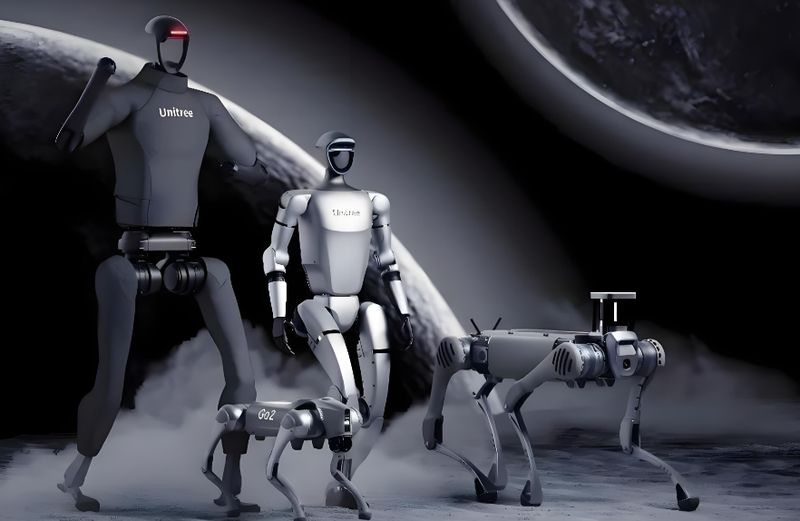
Based on our evaluation of technical specifications, degrees of freedom, motion control capabilities, AI model integration, brand recognition, application scenarios, and commercialization progress, the current ranking of Chinese robotics manufacturers is as follows.
- UBTECH
- Unitree Robotics
- Agibot
- Fourier
- Paxini
- Booster Robotics
- Galaxy
- Leju Robotics
- CloudMinds
- Startups, including EngineAI, RobotEra
1. UBTECH: China's First Publicly Traded Humanoid Robotics Company
UBTECH Robotics, founded in 2012, became China's first publicly traded humanoid robotics company following its Hong Kong stock market listing in late 2023. Despite facing internal management challenges and reporting losses exceeding revenue, the company maintains its position as China's pioneer in large-scale commercialization of humanoid robots.
The company's product evolution reflects its progressive technological advancement. UBTECH initially focused on smaller educational robots, launching the panda-shaped Alpha learning robot in 2014 for the AI education market. The company gained national recognition in 2016 when 540 Alpha 1S robots performed synchronized dances during the CCTV Spring Festival Gala. In 2018, UBTECH unveiled its first-generation Walker humanoid robot, which has undergone continuous iteration and refinement. The company's current product lineup includes three major humanoid platforms: Walker, Walker X, and the Panda Robot YoYo, serving diverse sectors including education, logistics, entertainment, and business services.
UBTECH has established robust intellectual property foundations with over 2,100 patents covering its full-stack technology approach. This comprehensive technological ecosystem integrates hardware, software, services, and content in a unified platform. The Walker series features more than 40 degrees of freedom throughout its body and achieves remarkable bipedal movement precision with gait control error less than 2cm. The robots' motion control system employs proprietary 3D visual positioning combined with multi-sensor fusion to enable complex movements including dynamic balancing, stair navigation, and dance performances.
The company's AI capabilities center on its proprietary "Cloud AI" multimodal interaction system, which integrates custom-developed speech and vision models supporting contextual task learning. In February 2025, UBTECH announced a partnership with DeepSeek to develop advanced multimodal embodied reasoning models specifically designed for humanoid robots. This collaboration builds on earlier integration with Baidu's Wenxin large language model, which enhanced the Walker S platform's multimodal perception, intent understanding, and task planning capabilities.
UBTECH leads China's humanoid robot commercialization efforts with extensive industry partnerships. The Walker S1 has been adopted by major manufacturers including BYD, Geely, Foxconn, Dongfeng Liuqi, FAW Hongqi, and SF Express for practical training programs. By early 2025, the company had secured orders exceeding 500 units from automotive manufacturers alone. UBTECH's strategic roadmap targets breakthrough applications in 3-5 key industries within the next three to five years, with plans to achieve mass production capabilities through 18-24 months of production line optimization. The company projects cumulative shipments exceeding 20,000 units by the end of 2025, supporting a corporate valuation exceeding $10 billion.
2. Unitree Robotics: China's Innovative Robotics Pioneer
Unitree Robotics, founded in 2016 by Wang Xingxing (born in the 1990s), has rapidly established itself as a leading force in China's robotics industry. In just eight years, the company has achieved unicorn status with a current valuation of $8 billion. Unitree's technological innovations and market impact have garnered high-level government recognition, with Wang being personally acknowledged by China's General Secretary during a February 2025 forum for private enterprises at the Great Hall of the People, who noted, "You are the youngest entrepreneur here!"
Unitree distinguishes itself through vertical integration, independently developing critical components including motors, gearboxes, controllers, LiDAR systems, and binocular cameras. This self-reliance in core technologies enables greater control over performance and quality while reducing dependency on international supply chains. The company's three-finger dexterous hand system, Dex3-1, represents a significant advancement in robotic manipulation capabilities. Unitree's robotics platform is powered by their proprietary UnifoLM world model, while the company strategically partners with NVIDIA to leverage advanced general-purpose AI for enhanced robot functionality.
The company's product portfolio reflects its progressive technical evolution. Unitree initially established market dominance with its industrial-grade quadruped robots—the B1 and B2 models launched in fiscal years 2022 and 2023 respectively—which now command approximately 60% of global market share in their category. Building on this success, Unitree expanded into humanoid robotics with the H1 model introduced in August 2023, followed by the enhanced G1 version in May 2024. With pricing starting at $16,000, Unitree offers among the most competitive entry points for advanced humanoid robots, positioning the company to potentially lead mass-market adoption as production scales and costs decrease further.
3. AgiBot: The Biggest Library of Humanoid Skills
Zhiyuan Robotics (also known as Agibot) was founded in February 2023 by two notable tech figures: Zhihui Jun, a former Huawei "genius boy" who specialized in AI edge computing as part of Huawei's Rise computing product line, and Professor Yan Weixin from Shanghai Jiaotong University. Despite being established just over two years ago, the company has demonstrated remarkable growth, completing eight financing rounds with a current valuation exceeding 7 billion yuan (approximately $1 billion). Their impressive investor roster includes Gao Tiles Venture Capital, automotive giant BYD, and Blue Chip Ventures.
Zhiyuan has adopted a comprehensive full-stack development approach, building all critical components including software, hardware, AI "brain," motion control "cerebellum," and cloud systems entirely in-house. Rather than relying on OEM assembly, the company established its own manufacturing facility in Shanghai's Lingang area, giving it complete control over production quality and capacity.
Six months after founding, Agibot unveiled its first humanoid robot, the Expedition A1. Standing 175cm tall with an 80kg payload capacity and 49 degrees of freedom, it immediately positioned itself among the most advanced humanoid robots developed in China. In August 2024, the company expanded its product line with five new models, including the Expedition series and the Rhinoceros X1, which features a full-stack open-source architecture allowing third-party developers to build upon its platform.
January 2025 marked another significant milestone with the introduction of EnerVerse, described as the world's first 4D world model. This advanced AI system guides robots through complex tasks while generating future embodied space through autoregressive diffusion modeling. Agibot has also established a five-generation roadmap for embodied intelligence evolution: G1 (specific scenario focus), G2 (multi-scenario capabilities with limited generalization), G3 (transition from algorithm-driven to data-driven approaches), G4 (incorporation of simulation data and world models), and G5 (high-level autonomy from sensing to execution). Currently, the company positions its technology between the G2 and G3 stages.
Zhiyuan has formed strategic partnerships with JunPu Intelligence, Digital Huaxia, KDDI, Nortel Digital Intelligence, and iSoftStone to develop commercially viable applications across various sectors. As of January 2025, the company had produced over 1,000 general-purpose robots, demonstrating both manufacturing capacity and market acceptance.
4. Fourier Intelligence: From Rehabilitation to Humanoid Robotics
Fourier Intelligence, founded in 2015 by Gu Jie, began with a specialized focus on medical rehabilitation robotics before expanding into general-purpose humanoid robots. Named after the renowned mathematician Jean-Baptiste Joseph Fourier, the company established its initial reputation by developing therapeutic devices, launching upper limb rehabilitation robots in 2016 followed by lower limb rehabilitation systems in 2017.
The company's technological trajectory changed significantly in 2019 when its breakthrough development of frameless motors enabled the establishment of a dedicated humanoid robotics program. This innovation culminated in the 2023 release of GR-1, Fourier's first general-purpose humanoid robot, marking the company's successful transition from medical rehabilitation devices to advanced humanoid systems. In September 2024, Fourier unveiled the next-generation GR-2, completing its comprehensive product ecosystem that integrates rehabilitation robots, the Galileo control system, and humanoid robots.
Fourier's technical advantage stems from its proprietary high-performance actuator technology. The FSA (Fourier Smart Actuator) integrates motor, driver, reducer, and encoder components into a unified system, enabling GR-1's exceptional motion flexibility and control precision. The more advanced GR-2 features 53 degrees of freedom throughout its body, with particular emphasis on its next-generation dexterous hands. These hands incorporate 12 degrees of freedom per hand and utilize the upgraded FSA 2.0 actuator system to deliver enhanced manipulation capabilities.
The company has successfully begun commercial deployment of its humanoid robots across diverse sectors. GR-1 units are currently undergoing operational training at China Construction Bank facilities and testing in SAIC-GM manufacturing plants. Leveraging its extensive background in medical devices, Fourier has also deployed robots as rehabilitation assistants in healthcare settings. By the end of 2024, Fourier had delivered more than 100 GR-1 units to customers. Industry projections suggest total humanoid robot deliveries across all manufacturers could exceed 1,000 units in 2025, with Fourier positioned as a significant contributor to this expanding market.
5. PaXini: Pioneering Multi-Dimensional Tactile Technology for Humanoid Robotics
PaXini Technology has established itself as an innovative leader in tactile sensing technologies for robotics, developing a comprehensive product ecosystem spanning multi-dimensional tactile sensors, advanced dexterous hands, and sophisticated humanoid robots. The company specializes in high-precision tactile perception systems that significantly enhance robotic manipulation capabilities across industrial and service applications. In fact, western companies such as FigureAI purchase the dexterous hands from PaXini for their humanoids.
PaXini's product line includes:
- TORA-ONE Humanoid Robot: Released as their second-generation multi-dimensional tactile humanoid robot, TORA-ONE features 47 degrees of freedom—21 for the body and 26 for its four-fingered bionic dexterous hands. The robot integrates 1,956 high-precision ITPU tactile sensing units capable of 15 different types of multi-dimensional tactile perception, providing 7,824 tactile signals. TORA-ONE offers impressive specifications including single-arm load capacity of 5kg, 8-hour battery life, and adaptive height adjustment from 1.46m to 1.86m.
- DexH13 Dexterous Hand: Introduced as the industry's first integrated multi-dimensional tactile and AI vision dual-modal dexterous hand. Each hand features 13 active degrees of freedom and incorporates an 8-megapixel high-definition AI hand-eye camera with advanced zero-shot pose estimation algorithms. This enables complex manipulations from industrial tasks like lifting and welding to delicate operations requiring human-like dexterity.
- PX-6AX GEN2 Tactile Sensors: The latest generation of PaXini's ITPU (Intelligent Tactile Processing Unit) technology, these sensors deliver ultra-high resolution sensing with 0.01N precision. They detect multiple dimensions of tactile information including pressure, friction, texture, material properties, and temperature.
PaXini's multi-modal approach addresses critical limitations in robotic perception. While visual systems struggle with challenges like poor lighting, occlusion, and perspective distortion, tactile sensors provide immediate and accurate feedback about contact forces and states between robots and objects. This enables real-time adjustments to grasping force, posture, and hand trajectories—particularly valuable when handling soft, fragile, or irregularly shaped items.
6. Booster Robotics
Booster Robotics stands as a world-renowned humanoid robotics company with over 20 years of expertise in the field. Founded by Hao Cheng, a Tsinghua University graduate with extensive RoboCup competition experience, the company has built its reputation on creating accessible and practical humanoid platforms. In January 2025, Booster formed a strategic partnership with the RoboCup Federation alongside Fourier Intelligence and Unitree Robotics, demonstrating its commitment to advancing humanoid robotics research and education globally.
The company's flagship product, the Booster T1, is a versatile 118cm tall, 30kg open-source humanoid robot featuring 23 degrees of freedom. Priced between $20,000-$30,000, the T1 represents a significantly more affordable alternative to comparable humanoid platforms while maintaining impressive performance capabilities. The robot combines powerful hardware including an Intel i7 processor and NVIDIA AGX Orin chip delivering 200 TOPs of AI performance with a Realsense D455 RGBD camera and microphone array. It achieves walking speeds of 3.5 km/h, can perform complex movements like push-ups, kung-fu maneuvers, and boxing combinations, and smoothly transitions from lying down to standing positions.
Designed specifically for developers and researchers, the T1 provides a comprehensive development ecosystem featuring a complete API, ROS2 compatibility, and support for multiple simulation environments including Isaac Sim, Mujoco, and Webots. The robot's open architecture enables secondary development and customization, with Bluetooth connectivity to mobile apps for real-time control and feedback. These features make the T1 particularly valuable for educational institutions, research laboratories, and robotics enthusiasts seeking to experiment with advanced humanoid capabilities without the extreme costs associated with larger industrial platforms.
Booster Robotics' vision centers on uniting global developers to drive productivity evolution through accessible humanoid robotics. The company has secured substantial investment to scale production and expand market reach, focusing on providing stable, user-friendly humanoid platforms and efficient development tools that accelerate embodied AI implementation. Through its participation in initiatives like RoboCup, Booster contributes to the ambitious goal of creating fully autonomous humanoid robot soccer players capable of defeating human World Cup champions by 2050, while simultaneously advancing practical applications of humanoid technology across industrial, commercial, and research domains.
7. Galaxy: Emerging Leader in Chinese Robotics
Galaxy, founded in May 2023 by Dr. Wang He (a Peking University doctoral graduate born in 1992), has quickly established itself as a formidable player in China's humanoid robotics sector. Within its first year of operation, the company secured 1.2 billion yuan ($150 mln USD) in financing, earning it the distinction of being China's humanoid robotics "financing champion" for 2024 and achieving super-unicorn status at an unusually early stage.
In June 2024, Galaxy General unveiled its first-generation humanoid robot, Galbot G1, at NVIDIA's CES 2025 event. This model represents the company's initial approach to embodied AI with a distinctive hybrid design featuring "two arms + one leg + wheeled chassis" configuration. This architecture was strategically chosen to balance cost control with performance reliability, with plans to evolve toward fully bipedal models in future iterations.
Galaxy General has developed sophisticated technical capabilities through vertical integration of hardware and software systems. To address the challenging "sim-to-real gap" (the discrepancy between simulation performance and real-world operation), the company created a proprietary depth sensor simulator that improves environmental perception. On the software side, Galaxy General developed Open6DOR, described as the first large model system supporting six degrees of freedom for object manipulation with open semantic commands. This innovation is complemented by additional specialized models including NaVid (video-based perception), GraspVLA (visual-language-action integration), and SAGE (general intelligence framework).
The company has already achieved commercial deployment milestones. In September 2024, Galbot G1 units demonstrated 24-hour unattended operation at Meituan Buy Drugs facilities, successfully completing inventory replenishment and item retrieval tasks. Galaxy General has also established partnerships with automotive manufacturers including Mercedes-Benz and Extreme Krypton, where its robots autonomously handle sunroof component transfers, depalletization operations, and material transport while incorporating real-time error detection and correction. These implementations have measurably improved production and assembly efficiency in manufacturing environments.
8. Leju Robotics
Leju Robotics, established in 2016 and originating from the Harbin Institute of Technology's robotics team, has evolved from creating educational robot toys to developing advanced full-scale humanoid robots. The company has built an impressive product portfolio including the KUAVO humanoid robot series, Aelos robots for education, and specialized solutions for logistics and healthcare. This progression demonstrates Leju's commitment to pushing the boundaries of humanoid robotics technology while maintaining their educational roots.
In 2024, Leju achieved a significant technological milestone when their flagship KUAVO humanoid robot was integrated with Huawei's advanced Pangu embodied intelligence large model. This integration, debuted at Huawei Developer Conference 2024, dramatically enhanced the robot's capabilities in natural language processing, environmental understanding, and task execution. The partnership culminated in March 2025 with the joint unveiling of the world's first 5G-Advanced equipped humanoid robot at Mobile World Congress 2025, featuring ultra-low latency and precise location tracking capabilities without additional equipment.
Leju has strategically positioned itself within China's robotics ecosystem through partnerships with industry leaders across multiple sectors. The company has established collaborative relationships with Huawei Cloud for AI development, China Mobile for telecommunications applications, Haier for smart home integration, and Jiangsu Hengtong for industrial manufacturing implementations. These partnerships enable Leju to deploy their humanoid robots across diverse scenarios including public service, healthcare, education, and manufacturing environments.
The company's KUAVO humanoid robot demonstrates impressive technical capabilities including bimanual coordination for complex manipulation tasks, advanced natural language processing for human-like conversation, and adaptive learning to personalize interactions. Leju has expanded its market presence through strategic deployments, including KUAVO robots serving as tour guides at China Mobile's Smart Home Operations Center and exploring applications with NIO in the automotive sector. Through continuous innovation and strategic partnerships, Leju has positioned itself as a frontrunner in China's rapidly expanding humanoid robotics industry, contributing to the nation's goal of mass-producing humanoid robots by 2025.
9. CloudMinds: Pioneering Cloud-Based Humanoid Robotics
CloudMinds (also known as Daxu Technology) was founded in December 2015 by Huang Xiaoqing, former director of the China Mobile Research Institute. The company made its first major public appearance in 2023 with the unveiling of its humanoid bipedal robot XR4, nicknamed "Xiao Zi" (Little Purple). By early 2024, industry reports indicated the company was preparing for a Hong Kong IPO, cementing its position as a leader in China's intelligent robotics sector.
CloudMinds distinguishes itself through its proprietary "HARIX" cloud robotics architecture. This innovative approach combines three key elements: cloud-based AI processing ("cloud brain"), secure network infrastructure, and physical robot hardware. The company's guiding philosophy—"robots serve people, and Daxu serves robots"—reflects its vision of creating robotic assistants for widespread consumer adoption. This approach allows for lighter, more affordable robots by offloading complex processing to cloud servers.
The company has built an impressive intellectual property portfolio with more than 2,000 patent applications, giving it the world's largest collection of cloud robotics patents. CloudMinds' product ecosystem includes the RobotGPT model (which earned recognition as "the most internationally breakthrough Chinese brand"), the HARIX OS 5.0 cloud robot operating system, the Cloud Ginger 2.0 humanoid robot, and the SCA 2.0 intelligent flexible actuator system for precise movement control.
From a technical perspective, the Ginger robot features 32 degrees of freedom throughout its body, enabling human-like movement capabilities. The cloud-based brain architecture achieves millisecond-level response times while handling over 90% of decision-making processes in the cloud rather than on the robot itself. This architecture enables advanced capabilities including adaptive walking on variable terrain and coordinated dual-arm manipulation tasks that would require substantially more onboard computing power in traditional robot designs.
CloudMinds has focused its commercialization efforts on healthcare applications, smart city infrastructure, and elderly care services. The company plans to deploy more than 5,000 robots by 2025, with particular success in the elder care sector where it has secured 68% of robot orders from China's national elderly care institutions. CloudMinds has also established a strategic partnership with China Mobile to develop a robot cloud platform that processes an average of 20 petabytes of data daily—a scale that has earned it the nickname "the Amazon cloud of robotics."
10. Upstarts in Humanoid Robotics: EngineAI, RobotEra, Dobot, PUDU Robotics, Casbot, LimX Dynamics
EngineAI: Rapid Development with Academic Foundations
Founded in October 2023, Shenzhen-based EngineAI has quickly established itself as a promising newcomer in humanoid robotics. The company debuted at CES 2025 with three models: the SE01, SA01, and PM01, designed as development platforms for advancing embodied intelligence. Led by industry veteran Zhao Tongyang, who previously founded Dogotix and XPENG Robotics, EngineAI employs 36 researchers from prestigious institutions including UC Berkeley. Their SE01 humanoid stands out for its remarkably human-like gait achieved through NVIDIA's Isaac Gym simulation environment, enabling the robot to perform complex movements including squatting, running, and push-ups. While ambitious, the company aims to produce over 1,000 units by year-end 2025 but remains primarily focused on research and development rather than immediate commercial deployment.
Robot Era: Tsinghua-Backed AI-Native Approach
Robot Era, established in August 2023 and incubated by Tsinghua University's Institute for Interdisciplinary Information Sciences, secured nearly 300 million yuan in pre-Series A funding in October 2024. The company focuses on developing native general-purpose embodied intelligence systems with an innovative AI-driven hardware platform. Their flagship humanoid, STAR 1, represents a significant technological achievement with its end-to-end learning method that relies solely on neural networks for mobility and manipulation tasks. The robot features 55 degrees of freedom, improved joint torque of 400 N·m, and operating speeds up to 25 rad/s. While STAR 1 has passed multiple product-level tests meeting market standards, Robot Era remains primarily in the research and development phase, focusing on advancing their language-visual-action model before pursuing widespread commercial applications.
Dobot: Precision Robotics Entering the Humanoid Space
Founded in 2015, Dobot has recently expanded from its established robotic arm business into humanoid robotics with the Dobot Atom. Unveiled in March 2025, this 153cm tall, 62kg humanoid features advanced capabilities including dexterous manipulation and energy-efficient straight-leg walking. With an edge computing power of 1,500 TOPS (7.7 times the industry standard), Atom can perform tasks ranging from breakfast preparation to precision industrial applications. While Dobot has begun accepting preorders at 199,000 yuan ($27,500), mass production isn't scheduled until mid-2025, placing the company in a pre-commercial phase despite its more mature business foundation compared to newer entrants.
PUDU Robotics: From Service Robots to Humanoids
PUDU Robotics, established in 2016, began with catering delivery robots and has shipped over 70,000 service robots to more than 60 countries. The company has recently pivoted toward humanoid development, unveiling its first full-sized bipedal humanoid, the PUDU D9, in December 2024. Standing 170cm tall with 42 degrees of freedom and a maximum joint torque of 352 Nm, the D9 builds on PUDU's earlier semi-humanoid D7 and incorporates their DH11 dexterous hand system. While PUDU has announced pre-sales, the D9 remains in late development stages, with the company leveraging its extensive commercial service experience to refine the platform before full-scale deployment. PUDU's "Robot-to-Everything" architecture, introduced in January 2024, aims to create an interconnected ecosystem across specialized, semi-humanoid, and humanoid robots.
CASbot (Zhongke): Academic Roots with Tiered Product Strategy
Founded in 2023, CASbot has rapidly developed three distinct humanoid platforms tailored to different market segments. Between July and December 2024, the company launched the SA01 bipedal robot for scientific research and education (priced at 3.85 million yuan), the SE01 industrial full-size humanoid (15 million yuan), and the PM01 open-source general-purpose platform (8.8 million yuan). This tiered approach allows CASbot to serve both research institutions and industrial applications while building market presence. Though technically available for purchase, these high-priced units indicate CASbot's current focus on specialized institutional customers rather than mass-market deployment, positioning the company as an emerging player still establishing its technological foundation before pursuing broader commercialization strategies.
LimX Dynamics: Modular Approach to Research Applications
LimX Dynamics, established in 2022 and backed by Alibaba as their first investment in the humanoid robotics sector, remains primarily in the research and development phase of humanoid robot technology. The company has demonstrated promising prototypes including the CL-1 humanoid, which has been shown in testing videos performing tasks like stair climbing and package handling, but has not yet commercialized these advanced platforms despite their impressive capabilities. Their only available product is the TRON 1 research platform released in October 2024, which features a modular "Three-In-One" design supporting multiple foot configurations (Point-Foot, Sole, and Wheeled) and is positioned specifically for academic and industrial research applications rather than end-user deployment. Having secured approximately 500 million yuan ($70 million) in Series A funding from investors including China Merchants Venture, NIO Capital, and Lenovo Capital, LimX is continuing development work on general-purpose humanoid robots for future applications in manufacturing, logistics, and service sectors, but remains at the prototype demonstration stage rather than commercial production for their humanoid robotic systems.
Robot Initiatives by Major Chinese Tech Companies
The major Chinese technology companies are accelerating their entry into the humanoid robotics market. While internet giants like Alibaba, Baidu, and Tencent have primarily approached the sector through investments and AI large model development (focusing on the "brain" aspect), several companies have committed to developing complete hardware solutions. Based on technical capability, self-developed hardware, product readiness, AI model integration, and commercialization progress, the current industry leaders can be ranked as follows:
Xiaomi > XPeng > Huawei > Tencent > GAC/Chery > ByteDance/Alibaba/Baidu/Meituan
| Company | Baidu | Huawei | Alibaba | Tencent | ByteDance | Meituan | Xiaomi |
| Entry Strategy | Investment + Large Model | Investment + Large Model | Investment + Large Model | Investment + Self-Research | Large Model | Investment | Self-Research |
| AI Model Name | Wenxin (ERNIE) | Pangu + Dengwen | Tongyi Qianwen | Hunyuan, GPTs | GR-2 Embodied Model, Doubao, Yunque | N.A. | N.A. |
| Partner Companies | UBTECH | 16 companies | Youlu Robotics | N.A. | N.A. | N.A. | N.A. |
| Investment Portfolio | Zhiyuan Robotics, Xinghai Tu, etc. | Leju, Dagel, Jimu, etc. | LimX Dynamics, Moonshot AI, MiniMax, Baichuan Intelligence, etc. | Leju Robotics, UBTECH, etc. | Future Robotics, Elephant Robotics, etc. | Yushu Technology, Galaxy General, etc. | Yushu Technology, Dreame Technology, etc. |
| Self-Developed Products | N.A. | N.A. | N.A. | Robotics X Laboratory | N.A. | N.A. | CyberOne |
Xiaomi
Unlike most internet companies that focus solely on AI development, Xiaomi has committed to full-stack humanoid robot development. In 2022, Xiaomi unveiled CyberOne, a comprehensive humanoid bionic robot featuring proprietary AI systems. Standing 177cm tall and weighing 52kg, CyberOne incorporates 21 degrees of freedom throughout its body, with each joint capable of responding within 0.5 milliseconds. The robot can recognize 45 human emotional states and distinguish 85 types of environmental sounds. While controlling costs (targeting under 500,000 yuan for mass production), Xiaomi has prioritized integrating CyberOne into its own manufacturing system rather than immediate consumer sales. As of June 2024, Xiaomi relocated its robotics division to its Yizhuang factory in Beijing, where CyberOne is being gradually deployed on production lines.
XPeng
XPeng entered the robotics sector in 2020 by acquiring "Multi-legged Robot" and establishing "XPeng Robotics." After releasing the bipedal robot PX5 in 2023, XPeng unveiled its advanced humanoid robot "Iron" in November 2024. Iron represents a comprehensive redesign of XPeng's robotic technology, standing 178cm tall and weighing 70kg with 62 active degrees of freedom throughout its body and 15 movable degrees of freedom in its hands. The robot is powered by XPeng's proprietary Turing AI chip, delivering up to 3,000 TOPS of computing power for advanced data processing and learning capabilities. Iron incorporates XPeng's AI Hawk Eye vision system for 720° environmental perception with no blind spots, enabling precise movement and obstacle avoidance through end-to-end large model integration and reinforcement learning algorithms. Currently, Iron is undergoing practical training at XPeng's Guangzhou factory, primarily supporting the production of P7+ vehicle models.
Huawei
Huawei's robotics journey began in 2017 through research partnerships with the University of Edinburgh and SoftBank. After initial exploration in 2022, Huawei invested 870 million yuan to establish a robotics subsidiary in 2023. On November 15, 2024, the Huawei Global Embodied Intelligence Industry Innovation Center launched in Shenzhen, formalizing partnerships with 16 companies including Leju Robotics, Zhaowei Electromechanical, and others. Huawei's approach focuses on empowering domestic humanoid robot manufacturers through technology and resources, including its Pangu AI model, Bison compiler, and cloud platform infrastructure. Huawei's ecosystem development follows two models: "Huawei Empowerment," where partners develop products using Huawei's technology stack, and "Huawei Smart Choice," a deeper integration model similar to its automotive strategy.
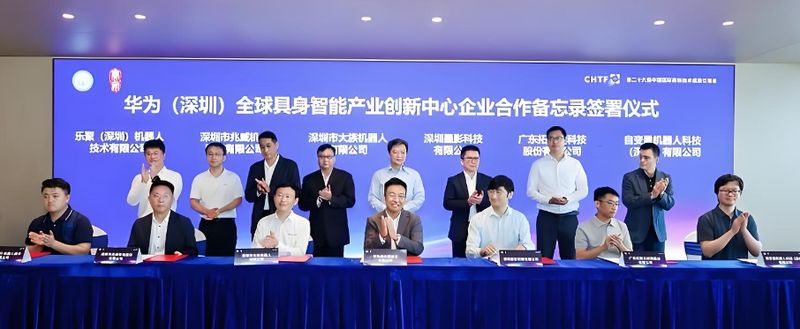
Tencent
Tencent established its Robotics X laboratory in 2018, adopting its characteristic wait-and-see approach before deeper commitment. In 2023, the lab released the TRX-Hand dexterous manipulator, followed by its first humanoid robot "The Five" in 2024. This four-wheeled robot with tactile skin and advanced hands focuses on recreational and cultural applications but has not yet entered commercial deployment. Tencent's primary strategy involves strategic investments across the robotics ecosystem, including stakes in Leju Robotics (2017), UBTECH (becoming its largest shareholder in 2018), Unitree Technology, and Star Era Robotics. On the AI front, Tencent has invested in seven large model companies including Spectrum AI, Baichuan Intelligence, and Moonshot AI.
GAC
In December 2024, GAC unveiled GoMate, its third-generation embodied intelligence robot featuring entirely self-developed core components. GoMate incorporates micro-low-voltage servo drives and integrated joint modules alongside GAC's vision automation algorithms. The robot can switch between quadrupedal and bipedal modes, standing up to 1.75 meters tall with 38 degrees of freedom. GAC plans to begin mass production of these components in 2025, with full robot production targeted for 2026. Initial applications include security inspections, with planned expansion to automotive production lines and after-sales service.
Chery
In May 2024, Chery Automobile, in partnership with AI company Aimoga, released the humanoid robot Mornine. The robot features a biomimetic design with a silicone face capable of realistic facial expressions and five-fingered dexterous hands for enhanced manipulation. Chery envisions Mornine evolving through three phases: initially as an information provider, then adding autonomous navigation and manipulation, and finally becoming a comprehensive assistant capable of childcare, elder support, and household management.
Anatomy of a Humanoid Robot: Industry Chain Analysis
The humanoid robotics industry exhibits a clearly structured supply chain divided into three distinct segments. The upstream segment encompasses critical core components including frameless torque motors (from companies like Kollmorgen and Parker), specialized power systems, hollow cup motors (supplied by Faulhaber and Maxon), thermal management systems, precision reducers (from Nabtesco and Harmonic Drive), advanced sensors, specialized AI processors, planetary roller screws, and integrated actuator assemblies. These fundamental components determine the robot's performance capabilities, with Western companies currently dominating this technical space. The midstream segment focuses on humanoid robot manufacturing and integration, with companies like Boston Dynamics, Tesla, 1X Technologies, Agility Robotics, UBTECH, and Xiaomi leading development across global markets. The downstream segment represents application deployment across industrial manufacturing (pioneered by Boston Dynamics and FANUC) and commercial service sectors (represented by iRobot and Aldebaran Robotics). This tripartite structure demonstrates how specialized component technologies flow into robot manufacturing before ultimately reaching end-user applications, with vertical integration emerging as a key competitive advantage for companies operating across multiple segments.
| Supply Chain Level | Category | Key Companies |
| UPSTREAM: Core Components | Frameless Torque Motors | - Kollmorgen - Parker - Aerotech - Buko Corporation |
| Power Batteries | - Tesla - 1X - UBTECH - Dakuo Technology |
|
| Hollow Cup Motors | - Faulhaber - Portescap - Maxon - Allied Motion |
|
| Thermal Management Systems | - Tesla - Nide - Denso - Sanhua Intelligent Controls |
|
| Reducers/Gearboxes | - Nabtesco - Siemens - Kollmorgen - Harmonic Drive |
|
| Sensors | - Bosch - Honeywell - Texas Instruments - Hanwei Technology |
|
| Specialized Chips | - NVIDIA - Intel - Tesla |
|
| Planetary Roller Screws | - Rollvis - Ewellix - Qinchuan Machine Tool |
|
| Actuator Assemblies | - Tesla - 1X - UBTECH |
|
| MIDSTREAM: Humanoid Robot Manufacturing | Robot Manufacturers | - Boston Dynamics - Tesla - 1X Technologies - Agility Robotics - UBTECH - Xiaomi Group - Dakuo Technology |
| DOWNSTREAM: Humanoid Robot Applications | Industrial Manufacturing | - UBTECH - FigureAI |
| Commercial Services | - Agibot |
Upstream: Core Components
The upstream segment represents the most critical foundation of humanoid robots, comprising essential hardware and software elements. Key hardware components include specialized motors (frameless torque motors and hollow cup motors), precision reducers (harmonic and planetary), planetary roller screws, sophisticated controllers, and various sensors (force/torque, visual, tactile). These physical components work in conjunction with advanced software systems including perception algorithms, motion planning, and artificial intelligence frameworks that enable robotic functionality.
From a long-term perspective, the greatest value within the humanoid robotics industry chain resides in software systems. Companies that master or independently develop advanced motion control algorithms and artificial intelligence capabilities will ultimately control both the technical direction and development pace of humanoid robotics. These software-focused enterprises will become the "central nervous system" and "brain" of the industry, often positioning themselves as leaders in midstream robot manufacturing as well.
In the current market, core hardware components such as sensors, reducers, motors, and screws constitute a significant proportion of humanoid robot value, offering substantial growth opportunities. China's robust industrial foundation and comprehensive manufacturing ecosystem provide an exceptional environment for developing these critical humanoid robot components, representing enormous potential for China’s production and innovation in the field.
To illustrate these principles, we examine Tesla's Optimus humanoid robot as a case study for component integration and value distribution.
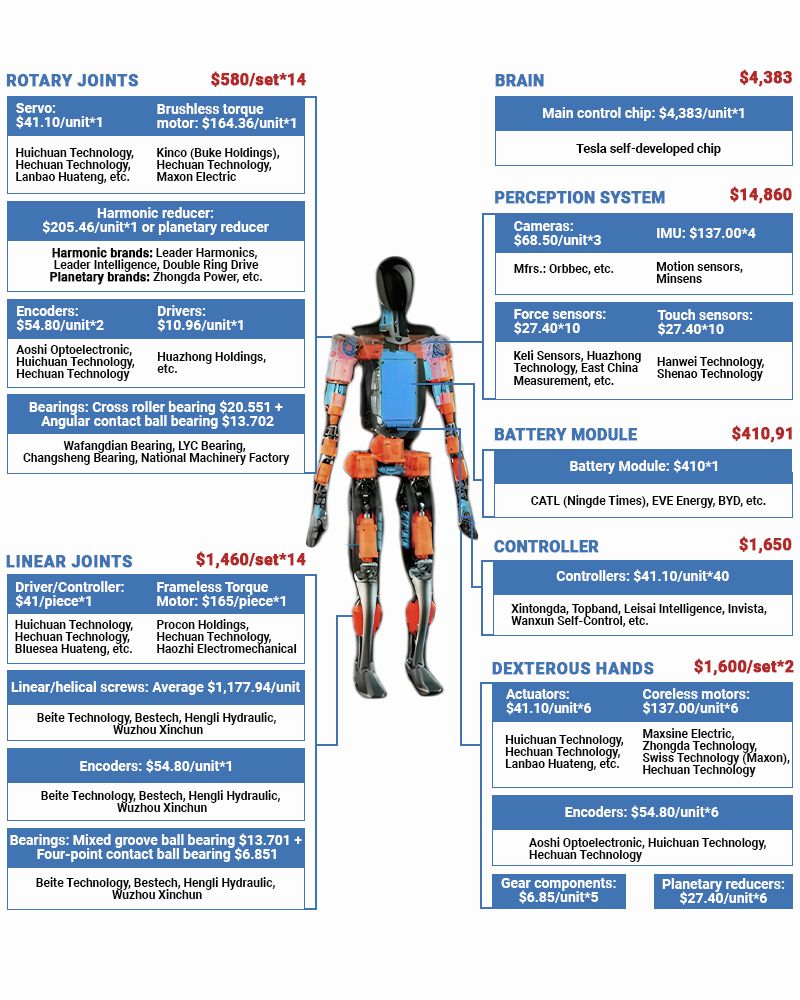
The following analysis breaks down the value allocation of major components based on an estimated $20,000 production cost target.
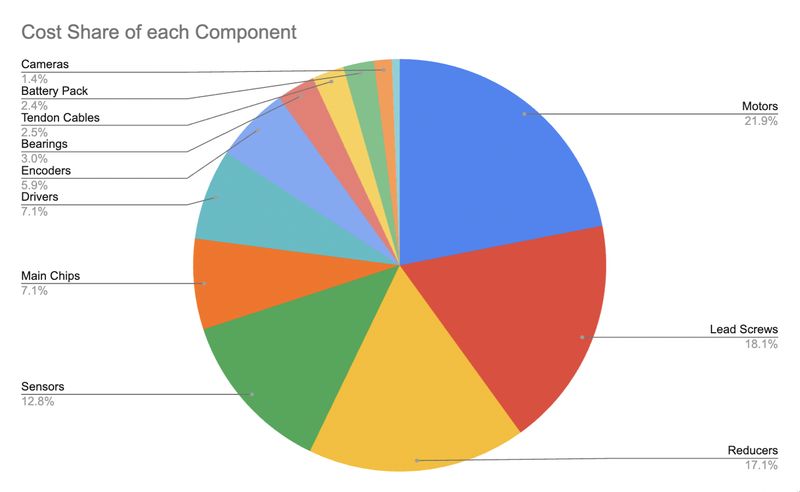
From a technical barrier perspective, the components rank in descending order of complexity: planetary roller screws > six-dimensional torque sensors > harmonic reducers > hollow cup motors > frameless torque motors.
Let's examine each category.
Motors (21.9% of Total Value)
Humanoid robots utilize two primary motor types: frameless torque motors for joint articulation and hollow cup motors for dexterous hand movements. These specialized motors differ significantly from conventional electric motors, requiring precise control systems and compact designs to enable human-like movement while maintaining adequate power output.
Frameless Torque Motor (for joints)
Definition and Structure
Frameless torque motors represent a specialized category of permanent magnet brushless synchronous motors distinguished by their minimal design. Unlike conventional motors, they lack a shaft, bearings, housing, feedback mechanisms, or end caps, consisting of only two essential components: a stator and a rotor. The rotor (internal component) features a rotating steel circular assembly embedded with permanent magnets and mounts directly onto the machine shaft. The stator (external component) consists of steel elements encircled by copper windings that generate electromagnetic force when energized, and fits tightly within the machine casing.
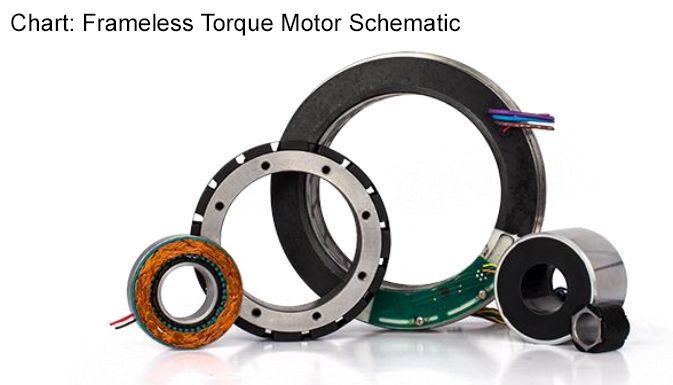
Key Advantages for Humanoid Applications
As a specialized type of servo motor, frameless torque motors offer several critical advantages for humanoid robotics applications. Their lightweight, compact design facilitates seamless integration into robotic joints while simplifying maintenance procedures. These motors deliver faster response to movement commands and greater energy efficiency compared to conventional alternatives. Most importantly, they provide superior torque at low and medium speeds—precisely matching the requirements of humanoid robot linear and rotary joints, which typically operate at lower speeds while demanding high torque output.
Market Landscape and Competition
The frameless torque motor market reached approximately 669 million yuan in 2022, representing a relatively specialized segment with moderate technical barriers. These barriers primarily involve magnetic circuit design, manufacturing process refinement, and the challenge of generating high power output from low-voltage power supplies. Leading Western suppliers include Kollmorgen, TQ Robodrive, Nidec, and Parker, which have historically dominated the high-performance segment. However, Chinese manufacturers have made significant competitive inroads, with companies like Buko (whose third-generation products now rival international leaders), Weichuang Electric, Wochuan Technology, Hetai Technology, and Danu Motors emerging as domestic champions in this increasingly important component category.
Hollow Cup Motors: Precision Drivers for Humanoid Robot Hands
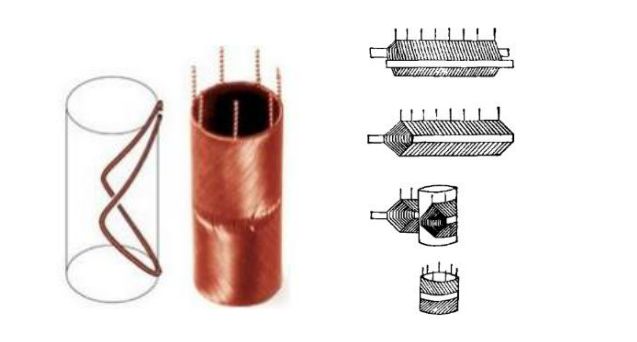
Definition and Characteristics
Hollow cup motors feature a distinctive design incorporating a coreless rotor and cup winding structure, fundamentally differentiating them from conventional motors. This specialized architecture enables extremely compact dimensions, typically under 40mm in diameter, while delivering exceptional performance characteristics. The coreless design eliminates iron losses and cogging torque, resulting in smooth motion even at very low speeds. These motors provide substantial advantages for robotic applications, including minimal size and weight, rapid acceleration response (typically 1-3 milliseconds), and superior energy conversion efficiency approaching 90% in optimal conditions.
Technical Barriers and Applications
The manufacturing of high-quality hollow cup motors presents three significant technical challenges: sophisticated coil design requiring advanced electromagnetic modeling, precision coil winding demanding tolerances measured in micrometers, and specialized automation equipment for consistent production. These technical hurdles have limited market entry for many manufacturers. Due to their exceptional precision and compact form factor, hollow cup motors are ideally suited for applications requiring both space constraints and high performance, such as aerospace instrumentation, CNC machine tool components, and—most relevant to humanoid robotics—dexterous robotic hands where multiple motors must fit within a human-sized palm while providing precise finger articulation.
Market Landscape and Competition
China's hollow cup motor market reached approximately 1.138 billion yuan in 2023, characterized by high concentration with dominant market share held by international manufacturers. Western companies controlled approximately 88% of this specialized market in 2023, with Swiss manufacturer Maxon Motor, German company Faulhaber, and Swiss-American Portescap (a Portescap Corporation subsidiary) maintaining leadership positions due to their long-established expertise and patent portfolios. Chinese manufacturers including Mingzhi Motor, Zhaowei Electromechanical, Weichuang Electric, Topband, and Leisai Intelligence have begun challenging this dominance through strategic investments in advanced manufacturing capabilities and proprietary designs specifically tailored for emerging applications in robotics and automation.
Screws (21.9% of Total Value)
Definition and Classification
Screws serve as essential mechanical transmission devices in humanoid robots, converting rotary motion from motors into precise linear movement. Their fundamental structure consists of a screw shaft with helical grooves engaging with a movable nut that travels along the shaft axis during rotation, enabling power transmission and position control. Screws are classified by friction characteristics into sliding screws, rolling screws, and hydrostatic screws. Within the rolling screw category, two primary types are used in robotics: ball screws and planetary roller screws. Ball screws offer low friction, high transmission efficiency, and precision positioning, with domestic production exceeding 60% of market demand. Planetary roller screws provide superior performance with higher load capacity, exceptional impact resistance, compact dimensions, faster operation speeds (up to 6,000 RPS compared to 3,000-5,000 RPS for ball screws), reduced noise, and significantly longer service life—often exceeding ball screws by a factor of ten—with transmission efficiency reaching 98%.
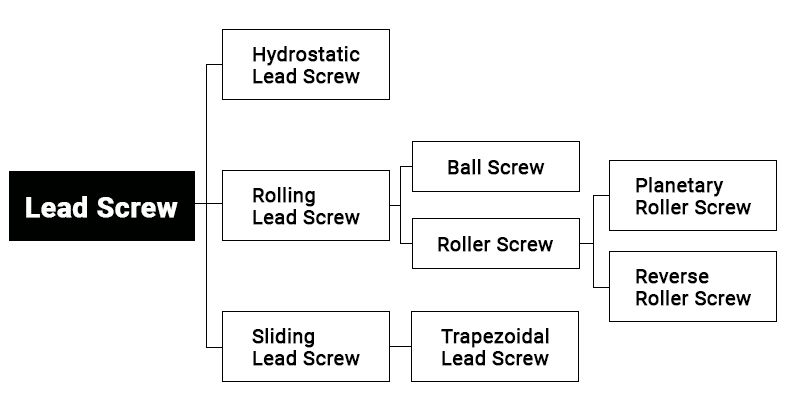
| Category | Planetary Roller Screw | Ball Screw |
| Illustration | 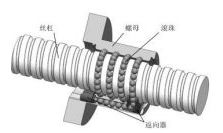 |
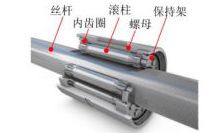 |
| Rolling element | Roller | Ball |
| Circulation mode of elements | Rollers orbit around the screw shaft axis in planetary motion | Circulation via a return mechanism to achieve rolling |
| Load condition of elements | Large contact area; all rollers share load simultaneously, with no cyclic alternating force | Small contact area; balls load in sequence, producing cyclic alternating stress |
| Centrifugal force on elements | Prevented by the planetary mechanism | Can become significant at high operating speeds |
| Pure rolling ratio | Very high | Relatively high |
Technical Barriers and Applications
Planetary roller screws represent one of the most technically demanding components in humanoid robots, creating a significant barrier to entry for manufacturers. The challenges include achieving micron-level precision (P1 grade), ensuring exceptional material purity, developing proprietary formulations, and mastering complex heat treatment processes that can involve 10-20 specialized manufacturing techniques. These components were traditionally used in precision machine tools, aerospace systems, and automotive applications before being adapted for humanoid robotics. In Tesla's Optimus robot design, screws constitute 23% of the linear joint assembly, with trapezoidal screws employed in lower-load applications like forearm articulation, while planetary roller screws handle the substantial mechanical stresses in major load-bearing segments including upper arms, thighs, and calves. The strategic importance of these components has prompted companies like BEST, Qinchuan Machine Tool, and others to accelerate development efforts to achieve domestic production capabilities.
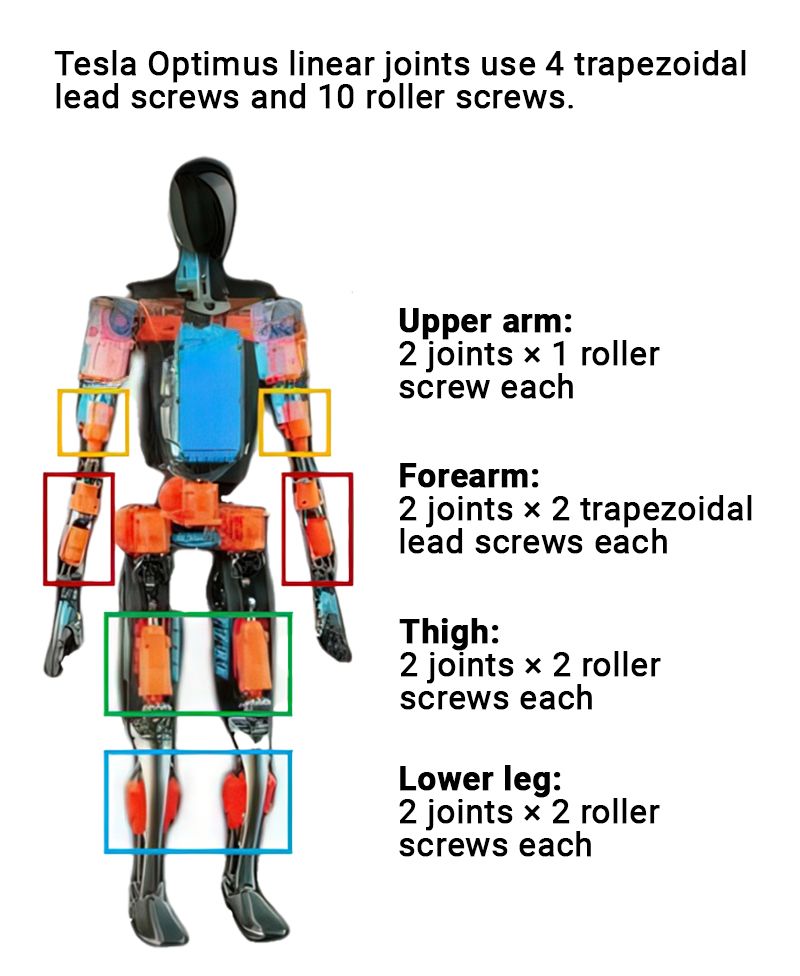
Market Landscape and Competition
The global ball screw market reached approximately $1.96 billion in 2023, with China's domestic market valued at 2.05 billion RMB. The more specialized planetary roller screw market remains dominated by established Western manufacturers including Ewellix (formerly SKF), Rollvis, GSA, Bosch Rexroth, and Creative Motion Control (CMC), who have developed proprietary technologies over decades. Chinese manufacturers have made significant inroads in recent years, with leading companies including Beitech, BEST, Hengli Hydraulic, Wuzhou Xinchun, Shuanglin, Dingzhi Technology, Rifa Precision Machinery, and Huachen Equipment developing competitive alternatives. This component category represents the most significant "choke point" in China's humanoid robotics supply chain, with continuing dependence on imported high-precision planetary roller screws for the most demanding applications, though domestic capabilities are advancing rapidly as manufacturers gain experience in high-precision manufacturing techniques.
Reducers (17.1% of Total Value)
Definition and Classification
Reducers function as core mechanical components within humanoid robots, serving as the crucial interface between power sources and actuator mechanisms. Their primary functions include modifying rotational speed, transferring torque efficiently, and enhancing control precision throughout the robotic system. For humanoid robotics applications, three primary reducer categories are employed: harmonic reducers, RV (Rotary Vector) reducers, and planetary reducers. Each type offers distinct performance characteristics suited to different applications within the robot's architecture. Harmonic reducers, characterized by their compact profile and high reduction ratios (typically 50:1 to 160:1), deliver exceptional precision and are primarily deployed in rotary joints throughout the robot's body. Planetary reducers feature smaller dimensions, lighter weight, and superior transmission efficiency, but with lower precision than harmonic systems, making them ideal for hand joints or body joints with less stringent accuracy requirements. RV reducers, while offering excellent performance, have limited application in humanoid robots due to their larger size and weight.
Comparative Performance Characteristics
There are three main reducer types: harmonic reducers, RV reducers and planetary reducers. The main features are listed below.
- Harmonic Reducers: Provide exceptional positioning accuracy (≤30 arc-seconds), high reduction ratios in compact packages, zero backlash, and excellent shock resistance. However, they exhibit lower efficiency (70-90%), higher costs, and generate more heat during operation. Their unique "flexspline" design enables the extremely compact form factor critical for humanoid joint systems.
- RV Reducers: Deliver superior torque capacity and rigidity with moderate precision (≤1 arc-minute) and excellent durability. Their cycloid-based design provides exceptional shock absorption but results in larger dimensions that limit application in space-constrained humanoid systems. These reducers maintain high efficiency (92-95%) even under substantial loads.
- Planetary Reducers: Offer balanced performance with moderate precision (1-3 arc-minutes), high efficiency (95-98%), compact design, and excellent cost-effectiveness. Their modular construction allows for flexible ratio configurations, making them versatile components for various robotic applications where extreme precision isn't the primary requirement.
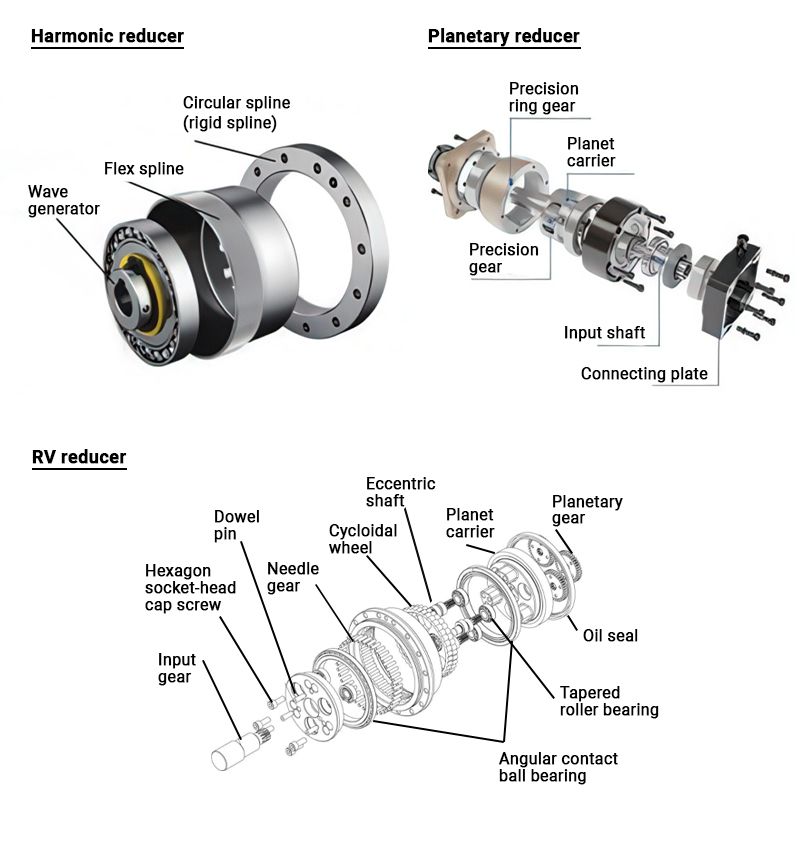
Figure XX: Harmonic reducer (left), RV reducer (center), planetary reducer (right)
| Performance Metric | Harmonic Drive | RV Reducer | Precision Planetary Reducer |
| Composition | Flexible spline, rigid spline, wave generator, etc. | Planetary reducer front stage + cycloidal pin-wheel (trochoidal) reducer rear stage. | Planet gears, sun gear, ring gear, etc. |
| Working Principle | The prime mover drives the wave generator, which deforms the flexible spline to mesh with the rigid spline, causing the flexible spline to rotate slowly opposite the wave generator's motion. | Input power is transmitted via the input shaft to the planetary gears for the first-stage reduction; the eccentric crank then drives the cycloidal disc in an eccentric motion, whose pins engage the housing, realizing the second-stage reduction. | The prime mover drives the sun gear; the sun gear meshes with the planet gears, causing them to spin. As the planet gears roll inside the ring gear, they orbit the sun gear, driving the planet carrier-connected to the output shaft-to rotate. |
| Size | Small | Large | Small |
| Transmission Efficiency | > 70% | > 80% | > 95% |
| Transmission Accuracy (arc ") | ≤ 60 | ≤ 60 | ≤ 180 |
| Output Torque Range (N·m) | 6.6–921 | 101–6135 | 40–1200 |
| Transmission Ratio Range | 30–160 | 30–192.4 | 3–512 |
| Torsional Stiffness (N·m/arc min) | 1.34–50.09 | 20–1176 | 10–370 |
| Service Life (h) | > 8000 | > 6000 | > 20000 |
| Typical Applications | Lightweight load zones (e.g., forearm, wrist, hand) | Heavy-load zones (e.g., base, upper arm, shoulder) | Lower limbs, hip joints, etc. |
| Unit Price (USD) | 137–685 | 685–959 | 164–1781 |
Comparison of the differences between the three major speed reducers
Market Landscape and Competition
The global market for precision reducers demonstrates clear regional leadership patterns. According to industry data, the 2023 global market sizes for harmonic, RV, and precision planetary reducers each remained below 10 billion yuan. China's domestic market reached 2.43 billion yuan for harmonic reducers, 5.022 billion yuan for RV reducers, and 3.536 billion yuan for precision planetary reducers.
Japanese manufacturer Harmonic Drive maintains global leadership in harmonic reducers with approximately one-third market share, followed by Japan's Nidec-Shimpo. In RV reducers, Japan's Nabtesco dominates with half the global market, followed by Sumitomo Heavy Industries. Precision planetary reducers see more distributed leadership among Japanese companies (Nidec-Shimpo), German manufacturers (Neugart, Wittenstein), and Taiwanese enterprises (Precision Technology).
Chinese manufacturers have established significant positions in each category. In harmonic reducers, domestic leaders include Green Harmonic, Leader Harmonics, CTKM Drive, and Telford Robotics. For RV reducers, Hengfengtai Technology ranks second globally with 13.7% market share, while Pegasus Drive, Qinchuan Machine Tool, and Nantai Germany maintain substantial positions. In planetary reducers, Kofon Intelligence stands as the only mainland Chinese manufacturer among the global top five, with Kofon, New Zealand Dart, and Taiwanese manufacturers Kingruei Technology and Li-Ming holding considerable market share.
The chart below shows the China-manufactured speed reducer situation.
| Company Name | Focus Area |
| Green Harmonics | Harmonic Reducers |
| Laifu Harmonics | Harmonic Reducers |
| Tongchuan Technology | Harmonic Reducers |
| Zhongda Lider | Harmonic Reducers; RV Reducers; Planetary Reducers |
| Dazhu Transmission | Harmonic Reducers |
| Guomao Holdings | Harmonic Reducers |
| Shuanghuan Transmission | RV Reducers; Harmonic Reducers |
| Nantong Zhenkang | RV Reducers |
| Qinchuan Machine Tool | RV Reducers |
| Smai Holdings | Harmonic Reducers |
| Ruidi Smart Drive | Harmonic Reducers |
| Fengli Intelligent | Harmonic Reducers; Planetary Reducers |
Sensors (12.8% of Total Value)
Sensors function as the perceptual organs of humanoid robots, enabling them to monitor both internal states and external environments. These devices provide critical real-time feedback for motion control and decision-making processes, forming the foundation of embodied intelligence in robotic systems. While humanoid robots incorporate multiple sensory modalities—including visual, auditory, tactile, and olfactory systems—strategically positioned throughout the body and head.
Six-dimensional force torque sensor
Definition and Classification
Torque sensors, sometimes called torque transducers, are specialized measurement devices that detect rotational force (torque) in both static and dynamic mechanical systems. These sensors convert physical torque into precise electrical signals with exceptional accuracy, rapid response rates, high reliability, and extended operational lifespans. Force sensors, a broader category that includes torque sensors, measure various mechanical quantities such as gravity, pressure, tension, and torque, translating these physical forces into usable electronic signals for real-time processing.
Force sensors are classified according to their measurement capabilities, ranging from one-dimensional to six-dimensional systems. One-dimensional sensors measure force in a single, predetermined direction with a fixed action point, with common examples including load cells and pressure sensors used in simple weight or pressure detection applications. Three-dimensional sensors represent an advancement in capability, simultaneously measuring force components along the X, Y, and Z axes in three-dimensional space. While effective for applications with a fixed action point, these sensors encounter significant measurement errors when force is applied away from the sensor's center, as they cannot compensate for the resulting torque components.
Six-dimensional force sensors—the most sophisticated force measurement devices available—simultaneously detect both force and moment information across all spatial dimensions. Also known as six-axis force/moment sensors or F/T sensors, these devices accurately measure three orthogonal force components (Fx, Fy, Fz) and three rotational moment components (Mx, My, Mz). This comprehensive measurement capability enables precise force detection regardless of where contact occurs on the sensor surface, making them ideal for applications requiring nuanced force perception.
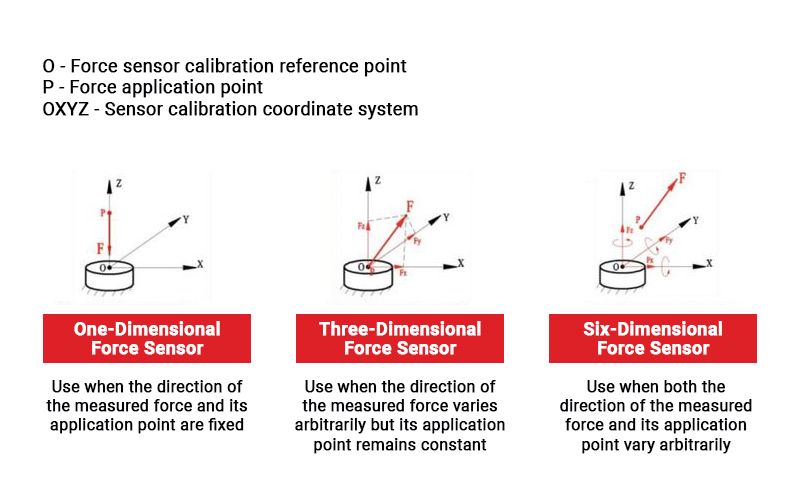
Features and Applications
Six-dimensional force sensors deliver superior precision and provide the most comprehensive mechanical feedback among force sensing technologies. Their ability to simultaneously measure both linear and rotational forces makes them essential components in high-precision fields including robotics, advanced manufacturing, automotive testing, and aerospace applications. In humanoid robotics specifically, these sensors serve as critical components in robotic arms and joint systems, providing continuous real-time force and torque feedback during interaction with objects and environments.
This precise force perception enables humanoid robots to execute sophisticated manipulation tasks requiring delicate touch and precise pressure control. When integrated into joint systems, these sensors allow robots to detect collisions, measure applied forces during manipulation, and adjust movement strategies based on resistance encountered. This capability forms the foundation of compliant motion control systems that enable safe human-robot interaction and adaptive manipulation of varied objects.
Market Landscape
The global six-dimensional force sensor market reached approximately $225 million in 2023, while China's domestic market was valued at 235 million yuan during the same period. Despite their critical importance to advanced robotics, production scale remains limited due to significant technical barriers and manufacturing challenges. Individual high-precision six-dimensional force sensors command premium prices between $24,000 and $26,000 per unit, reflecting the sophisticated design, materials, and calibration processes required for their production.
The global market remains dominated by established Western manufacturers, with industry leaders including ATI Industrial Automation, Schunk, Advanced Mechanical Technology, JR3 (Yuli Instruments), and Kistler. Chinese manufacturers have made significant progress in developing domestic alternatives, with notable companies including Kejie Sensing, Donghua Testing, Haoshi Electromechanical, Yuli Instruments, and Kunwei Technology. While these domestic producers continue to narrow the technology gap, challenges remain in achieving the measurement stability, cross-axis decoupling, and environmental resilience found in premium international products.
Vision Sensors
Definition and Classification
Vision sensors serve as the primary perceptual interface between humanoid robots and their environments, enabling spatial awareness, object recognition, and navigation. Most humanoid robotics manufacturers employ multi-sensor fusion approaches that combine various sensing technologies to create robust environmental perception, with Tesla's Optimus representing a notable exception through its pure vision strategy using "end-to-end" neural networks running entirely on onboard computing systems.
Visual perception technologies in humanoid robotics can be categorized as either 2D or 3D based on their imaging capabilities. Traditional 2D imaging employs RGB cameras that capture surface texture and color information but cannot directly determine object distances or spatial relationships. The resulting limitations in depth perception have driven the development of advanced 3D vision technologies including time-of-flight (ToF) sensors that measure light travel time to calculate distances, binocular stereo vision systems that mimic human depth perception through dual-camera triangulation, and structured light methods that project known patterns onto scenes to calculate spatial dimensions from pattern distortion.
Complementary sensing technologies further enhance robotic perception capabilities. Millimeter-wave radar systems provide reliable distance measurements even in adverse conditions like fog or dust. LiDAR (Light Detection and Ranging) delivers precise three-dimensional environmental mapping through laser-based scanning. Ultrasonic sensors offer cost-effective proximity detection for obstacle avoidance. Inertial Measurement Units (IMUs) continuously track the robot's orientation and movement, providing critical proprioceptive data that complements external environmental sensing. Each technology presents distinct advantages in detection range, resolution, environmental resilience, and computational requirements, driving manufacturers to develop integrated multi-sensor systems tailored to specific operational requirements.
| Sensor Type | Advantages | Disadvantages | Max. Operating Range |
| Millimeter-Wave Radar | Long range; measures radial velocity; all-weather capability | Unsuitable for static objects; prone to false alarms | 5–200 m |
| Camera | Excellent object recognition; measures lateral velocity; detects color distribution | High computational load; affected by lighting and weather; cannot measure radial velocity | 250 m (depends on lens) |
| LiDAR (Laser Radar) | Wide field of view; high distance and angular resolution | Cannot operate in adverse weather; expensive | 200 m |
| Ultrasonic | Low cost | Low resolution; unsuitable for high-speed targets | 2 m |
| IMU | Measures attitude and state (e.g., acceleration, angular velocity, orientation) | Accuracy highly dependent on cost | — |
| GNSS | With satellite, RTK, and inertial navigation, provides real-time high-precision absolute positioning | Susceptible to environmental obstructions (e.g., tree canopy) | — |
Market Landscape and Competitive Dynamics
According to GGII market research, China's machine vision industry reached ¥17.065 billion ($2.4 billion) in 2022, demonstrating rapid growth with projections exceeding $56 billion by 2027. This expansion reflects increasing demand for sophisticated visual perception systems across robotics, manufacturing, and automation sectors. The global market remains dominated by established Western and Japanese manufacturers, with companies like American-based Cognex and Japanese firm Keyence collectively controlling over half the worldwide market share through their advanced technological capabilities and extensive intellectual property portfolios.
Chinese domestic enterprises have made significant progress in narrowing this technological gap. Companies including Hikvision (security and surveillance vision systems), Daheng Technology (industrial cameras and vision solutions), Aupoint Technology (3D sensing systems), Lingyun Optoelectronics (machine vision components), Tianjun Technology (vision algorithms and systems), and Opto-electronic specialist manufacturers have continuously expanded their market presence through focused research and development efforts. These domestic manufacturers benefit from China's extensive electronics manufacturing ecosystem and growing expertise in artificial intelligence, enabling increasingly competitive solutions for both domestic and international markets. As humanoid robotics applications expand, these vision sensing technologies represent critical components for enabling sophisticated interaction capabilities, particularly in unstructured environments requiring adaptive perception and response.
Tactile Sensors (Electronic Skin)
Definition
Tactile sensors function as the "electronic skin" of humanoid robots, enabling physical interaction with the environment by detecting multiple parameters during contact. These sophisticated sensors capture temperature, humidity, pressure, and vibration data, while simultaneously assessing material properties like hardness, texture, and compliance. This comprehensive tactile information enables robots to perform precise object manipulation, grasp delicate items with appropriate force, and identify objects through touch alone. Distinguished by their flexibility, adaptability, and elasticity, modern tactile sensors can conform to irregular surfaces and complex geometries, similar to human skin.
Classification
Tactile sensing technologies can be categorized according to their underlying physical principles, with each approach offering distinct performance characteristics. Piezoresistive sensors, which change electrical resistance when compressed, excel at monitoring sustained pressure applications and provide reliable feedback during extended object manipulation. Capacitive sensors, utilizing changes in electrical capacitance between conductive layers, offer simple construction, excellent sensitivity, and low power consumption, making them prevalent in wearable applications and healthcare devices. Piezoelectric sensors generate electrical charges in response to mechanical stress, making them ideal for detecting rapid pressure changes and vibrations. Additional approaches include magnetic sensors (measuring displacement through magnetic field changes) and fiber-optic sensors (detecting pressure through light modulation within optical fibers).
Among these technologies, piezoresistive and capacitive sensors dominate current humanoid robotics applications due to their balance of performance, cost, and integration capabilities. Two critical development vectors are driving advancement in the field: increased sensor array density (larger arrays provide more comprehensive tactile information across contact surfaces) and enhanced flexibility (allowing seamless coverage of compound curved surfaces like fingertips and palms). Tesla's Optimus-Gen2 robot has notably incorporated advanced tactile sensors in its hands, potentially establishing new industry standards for tactile perception in humanoid systems.
Market Landscape
The global flexible tactile sensor market is projected to reach $5.32 billion by 2029, growing substantially from approximately $1.53 billion in 2022. Within this broader market, the specialized segment for robotic tactile sensors is expected to reach $430 million by 2029, reflecting the increasing importance of touch-based perception in advanced robotics applications. The market demonstrates high concentration, with dominant Western companies including Tekscan, Pressure Profile Systems, and Sensor Products Inc. collectively controlling a significant market share. According to QYResearch data, the top five global providers (CR5) held approximately 76% market share in 2022.
Chinese manufacturers have established growing presence in this field, with leading domestic companies including Hanwei Technology (specialized in various sensor technologies), Audiwei (focusing on pressure and force sensing systems), Shenhao Technology (developing flexible tactile arrays), PaXini (pioneering multi-dimensional tactile systems for humanoid robots), and Morrowind Technology (advancing electronic skin solutions). These companies are increasingly narrowing the technology gap with international leaders by leveraging China's manufacturing ecosystem and research capabilities in flexible electronics and novel materials, positioning domestic suppliers to capture greater market share as humanoid robot production scales.
Control Systems for Humanoid Robots
Definition
The control system of a humanoid robot comprises two essential integrated elements forming a computational hierarchy analogous to the human nervous system. The controller functions as the robot's "cerebellum" (representing approximately 2.9% of the robot's component value), handling motion control, real-time sensor processing, and coordinating physical movement execution. The main control chip or computing platform serves as the robot's "brain" (constituting approximately 7.6% of component value), responsible for high-level data analysis, environmental interpretation, and intelligent decision-making. This distributed architecture enables efficient division of computational tasks—separating intensive AI processing from time-critical motion control functions.
The main computational platform typically incorporates various specialized processing units depending on application requirements. These include general-purpose microcontroller units (MCUs) for basic control functions, digital signal processors (DSPs) for sensor data filtering and analysis, application-specific integrated circuits (ASICs) for specialized functions, and advanced AI accelerator chips optimized for neural network operations. This heterogeneous computing approach allows humanoid robots to simultaneously manage real-time sensor processing, physical movement coordination, and complex cognitive tasks such as object recognition and task planning.
Functional Capabilities and Performance
The control system processes information from multiple sensory inputs including cameras, IMUs, force/torque sensors, and tactile arrays to construct a comprehensive model of both the robot's internal state and its external environment. This multimodal data integration enables sophisticated behaviors including dynamic balance control, complex manipulation, obstacle avoidance, and adaptive interaction with humans and objects. The system continuously optimizes movement trajectories based on both pre-programmed parameters and real-time environmental feedback, allowing the robot to navigate unexpected terrain changes or adapt to moving objects.
High-performance computing platforms incorporate specialized neural network accelerators that enable robots to perform complex AI operations locally without requiring constant cloud connectivity. These systems support critical capabilities including semantic scene understanding, natural language processing, visual object recognition, and task learning through demonstration. As computational demands increase with more sophisticated behaviors, humanoid robots increasingly adopt heterogeneous computing architectures that optimize power consumption while maintaining real-time performance across diverse workloads.
Market Landscape
The global market for vision processing and AI acceleration chips is dominated by established technology leaders including NVIDIA (whose GPUs and specialized robotics platforms power many leading humanoid robots), Qualcomm (providing efficient mobile-derived processors for robotics), Ambarella (specializing in low-power vision processing), Intel (offering versatile computing platforms including Movidius vision processors), and Mobileye (leveraging autonomous driving technology for robotics applications).
Chinese manufacturers have developed competitive alternatives emphasizing cost-effectiveness and specific application optimization. Horizon Robotics has gained significant market share through its specialized robotics processors combining vision AI and control capabilities. Other notable Chinese suppliers include Allwinner Technology (cost-effective SoC solutions), Rockchip (compact multimedia processors adapted for robotics), and StarFive (RISC-V based control systems). In the specialized field of neural network acceleration, Chinese innovation is led by Cambricon (pioneering AI-specific chip architectures), SenseTime (developing integrated vision algorithms and hardware), HiSilicon (Huawei's semiconductor division focusing on comprehensive AI solutions), and Enflame Technology (building high-throughput AI computing platforms). This diverse ecosystem of specialized processors enables manufacturers to optimize performance, power consumption, and cost based on specific robotics applications.
Midstream: Humanoid Robot Design and Manufacturing
The midstream segment of the humanoid robotics industry revolves around comprehensive robot design, systems integration, and manufacturing—transforming individual upstream components into complete functional robots. This critical phase encompasses mechanical architecture design, chassis development, control system integration, power distribution implementation, and final assembly optimization. The most notable companies have been described earlier in this guide.
Downstream: Applications and System Integration
The ultimate value of humanoid robotics technology manifests in its diverse application scenarios where human-like capabilities offer unique advantages. Three primary domains currently represent the most promising deployment opportunities: manufacturing environments, social service settings, and specialized operations in extreme conditions.
Manufacturing Applications
- UBTECH Walker S1: Deployed at BYD's EV factory for battery module handling and quality inspections, achieving 99.7% precision in component sorting. The robots coordinate with autonomous vehicles for seamless logistics.
- Agibot A2-W: Handles flexible production lines in electronics manufacturing, using WorkGPT AI for adaptive task execution.
- Leju Robotics KUAVO: Collaborates with NIO for automotive door assembly, integrating force-sensitive grippers for millimeter-level accuracy in part alignment.
Social Service Applications
- UBTECH AI Education: Provides K-12 robotics curricula using Yanshee and uKit robots, training 500,000+ students globally in coding and AI literacy.
- Agibot A2: Serves as a multilingual customer service agent in retail, achieving 96% accuracy in voice commands and facial recognition for personalized interactions.
- Fourier GR-1: Assists elderly patients in rehabilitation centers with mobility support and medication reminders, leveraging emotion AI for empathetic interactions.
Special Operations Applications
- Fourier GR-2: Trained with NVIDIA Isaac Lab for lunar base construction simulations, performing extravehicular repairs in vacuum conditions.
- Agibot A2-Max: It demonstrated heavy-duty material handling capabilities, successfully moving a 40 kg aviation box during testing, illustrating its potential for hazardous material handling in special operations contexts.
Future Outlook and Key Trends in Humanoid Robotics
Humanoid robotics industry is on the verge of a rapid expansion, driven by strong policy support for private sector innovation and the integration of advanced AI technologies. The current stage of development is often compared to the electric vehicle industry in 2014—poised for mass production and expected to enter a decade-long cycle of accelerated industrial growth. As this new wave approaches, the sector’s most critical bottlenecks remain in the upstream supply chain, particularly in high-barrier components such as precision screws, motors, gearboxes, and advanced sensors. These technical "choke points" will continue to be focal areas for investment and innovation due to their complexity and essential role in robot performance.
Beyond these core components, industry observers recommend close attention to four major “supply chains” or industrial ecosystems, each anchored by a leading technology company and its network of suppliers and partners.
- Tesla Chain: Includes suppliers and partners such as Sihua Intelligent Control, Top Group, Mingzhi Electric, Green Harmonic, Shuanghuan Drive, Beite Technology, Zhejiang Rongtai, Wuzhou Xinchun, Zhenyu Technology, and Siling Shares, all of which play key roles in Tesla’s robotics and automation ecosystem.
- Huawei Chain: Features Huichuan Technology, Topstar, Leisai Intelligence, Sailix, Fulin Precision, Zhaowei Electromechanical, Blue Dye Technology, Wochuan Science and Technology, Haoneng Shares, Keliar, and Evert, who collaborate closely with Huawei in robotics R&D, AI, and industrial automation.
- NVIDIA Chain: Comprises Oriental Precision, Bojie Shares, Fengli Intelligence, Weichuang Electric, Hongbo Shares, Kodali, CLP Power Hong Kong, and Tianfu Communications, all of which are deeply involved in supplying AI chips, computing platforms, and simulation technologies for robotics.
- Unitree Robotics (Yushu) Chain: Involves Mannstar, Changsheng Bearing, Leisai Intelligence, Wolong Electric Drive, Obi Zhongguang, and North Dimension Technology, supporting Unitree’s rapid advancements in both quadruped and humanoid robot platforms.
As these industrial chains mature and interconnect, they are expected to drive down costs, accelerate technological breakthroughs, and enable large-scale commercialization of humanoid robots across manufacturing, services, and special operations in the coming years.

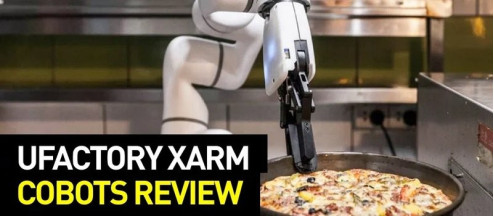

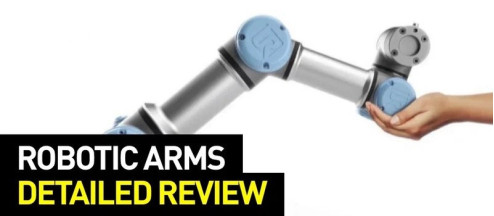
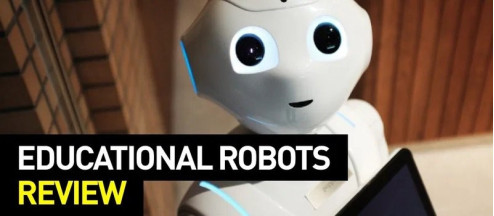
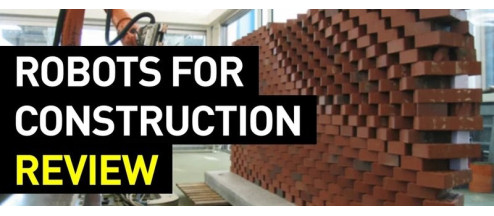
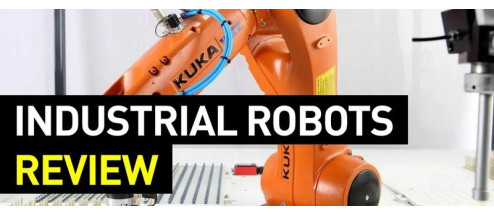

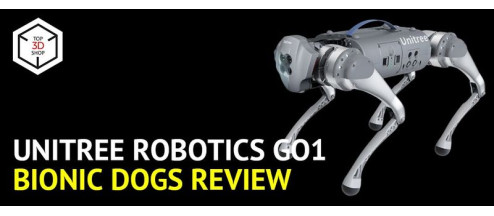
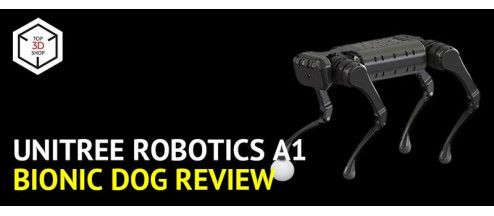


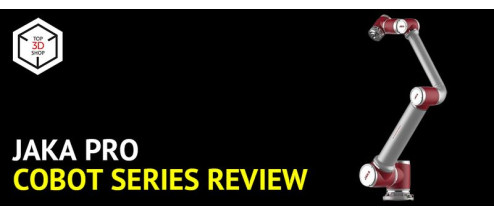
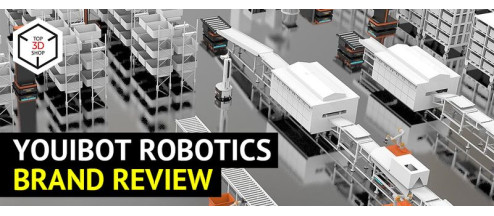
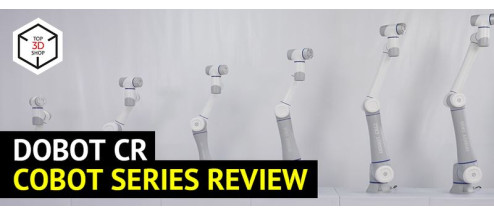
Write a comment